Tim Warnes's Blog: My Life in Books, page 7
April 8, 2022
The importance of diverse and inclusive picture books
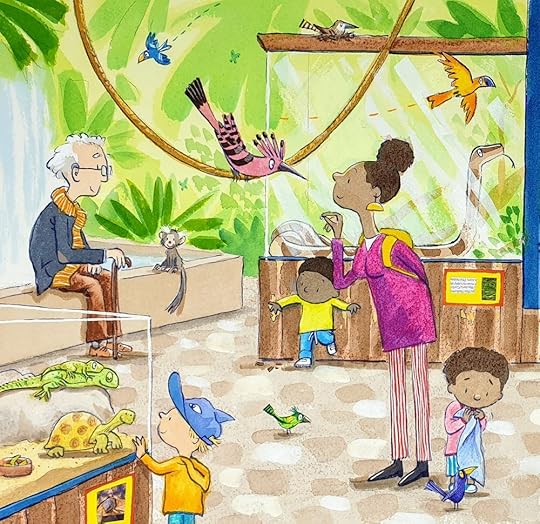
We’re seeing more and more disabled characters pop up in picture books. Maybe disability is finally having a moment.— James CatchpoleHere on my blog, I frequently discuss the importance of diversity in children’s books.
Here’s why:
1. It’s affirming. Kids have the right – and a need – to see themselves depicted in the books they read.
2. It develops understanding and empathy for others who are different from ourselves. Stories help us step into someone else’s shoes and see life from another perspective. (This applies to adults as well as kids!)
The conversation is usually centred around ethnic minorities. And in terms of racial diversity, picture books have improved significantly over the last few years.
Being inclusive of ethnic minorities is something I’ve consciously addressed in my work. For years, I managed to dodge the bullet simply because I declined all opportunities to illustrate people (aside from Santa) due to a lack of confidence in my drawing ability. So it wasn’t an issue. Until I was offered the job of illustrating I’m Going to Give you a Bear Hug! (Zonderkidz, 2016).
I based the lead character (a tousled, blonde-haired White boy) on my son, Levi. And I love the final illustrations. But all the time, I was aware of the need for better representation of kids from ethnic minorities in picture books and struggled with my decision. (Read more in my article, The importance of diversity in children’s books.)
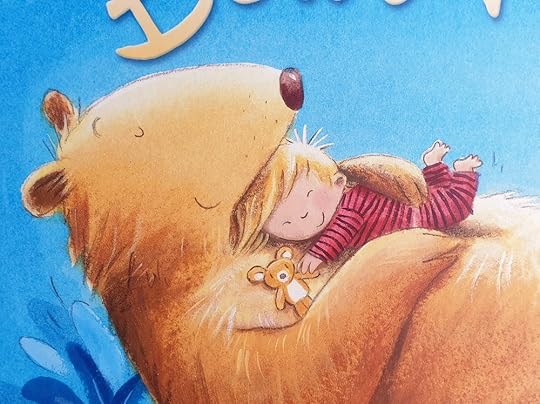
A few years later, I worked on the illustrations for Only You Can Be You! (Tommy Nelson, 2019). It was the perfect opportunity to show a diverse cast of characters! This was quickly followed by my illustrations for the follow-up to Bear Hug! This time around, there was no doubt in my mind about how to illustrate it. The resulting book, I Want To Give You a Polar Bear Hug! (Zonderkidz, 2020), features a Black family. I’m proud of my work, and rather than feeling tokenistic (as I’d feared), it felt (at least to me as the White creator) empowering.
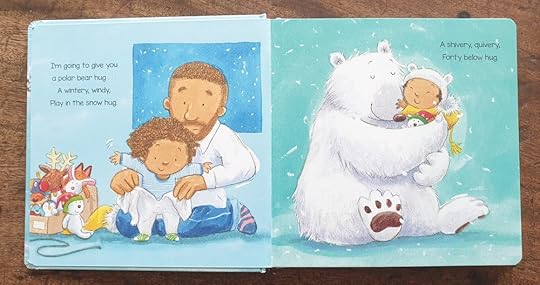
Diversity, of course, extends beyond the colour of someone’s skin or their ethnic group. So Only You Can Be You! features kids with glasses and kids with freckles and red hair. Neat and tidy kids and those who love the feel of paint on their bare feet! (Which reminds me – parents of neurodiverse kids have appreciated the book’s reassuring message: Everyone’s different, and that’s okay!)
And as we saw last week – disabled children need to see themselves represented, too. Which prompts a moment of self-reflection: How did I do with the cast of Only You Can Be You!?
Well, here’s my confession.
I intended to illustrate a child using a wheelchair.
I knew it was the right thing to do.
But, I’m embarrassed to say, I decided it was too hard to draw. (Pathetic, I know.) Instead, I tried taking the easy route and submitted my rough drawings to the publisher – wheelchair-free. Fortunately, the publisher insisted on including a wheelchair user.
In hindsight, I’m glad. The character was used to illustrate the line, Maybe you’re funny and tell silly jokes. It was a wise choice since it refers to a personality trait, thus acknowledging the kid as an individual rather than defining them by their disability. (For the record, yes – wheelchairs are tricky to draw!)
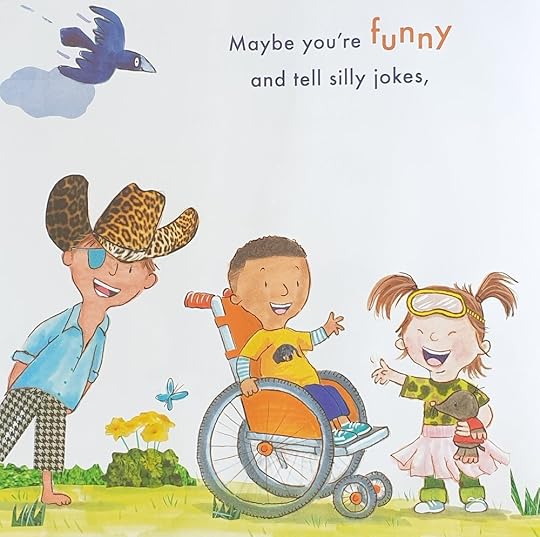
And amongst the kids in my original illustrations, there’s even a child wearing hearing aids (which I included at the publisher’s request). But curiously, I’ve just noticed that it was photoshopped out before going to print…
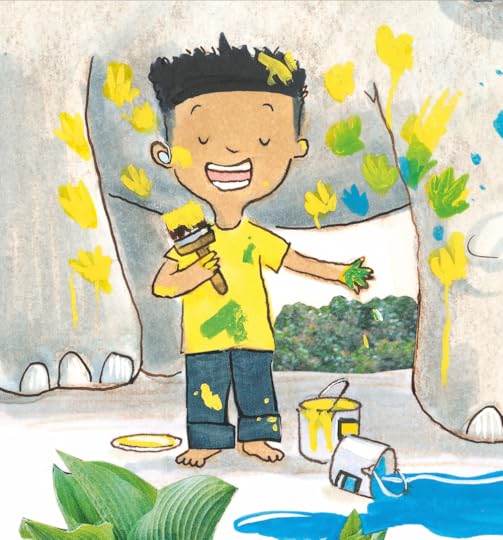
In hindsight, I wish I’d also thought of drawing a kid with a missing limb (like Joe in What Happened to You?). Or a kid using crutches.
Picture book creator Julie Flett was more thoughtful than I. Her delightful We All Play/ kimêtawânaw immediately ticks the diversity box with its inclusion of Cree words and children. But she also depicts a swimming child with a malformed arm. And why not? Because kids with disabilities (like Joe, the shark-fighting pirate!) like to play, too. There’s no comment or explanation. The child is simply there – an incidental but profound little detail, subtle enough that it might easily be overlooked.
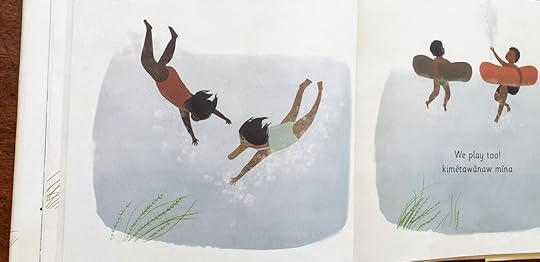
I’m still struck by how unusual it is for that to feature in a picture book. Curiosity aroused, I emailed Julie Flett and asked what led her to the decision to include the child?
Flett explained she’d been watching parasports, particularly swimming, when working on the book. Hence, the decision was natural and came about organically. (Encouragingly, Flett’s publisher, Greystone Books, ‘didn’t blink an eye.’)
But there’s empathy there, too: “I come from a community [Cree-Métis] who was not represented in kids books (or at least, not accurately), until recently,” she wrote. From personal experience, Flett understands the need to be accurately represented. She also acknowledged how far we’ve come along the road to diversity in picture books. “We have lots of books to share with kids now,” Flett writes. “And kids are seeing themselves in lots of different ways.”
As I write this, I realise the powerful effect reading What Happened to You? has had on me. It certainly did the trick that Catchpole hoped for: it put me in the shoes of a disabled child. As a result of the empathy I feel, it’s made me think hard about my future role as a creator of picture books. I’m left wondering: How can a non-disabled writer/illustrator be more inclusive of disabled characters?
I thought James Catchpole would be a wise person to ask, so I emailed him. I’ve summarised his excellent reply below (if you fit in the same category as me, I recommend you sit up and pay attention!):
Picturebooks can feature:
Disabled main characters.
Disabled secondary characters.
Disabled background characters.
The story can be about disability. (For example, What Happened to You?)
Or the disability can be incidental and not a particular feature. (For example, the children I’ve discussed from Only You Can Be You or We All Play.)
“Most picturebooks involving disability have been created by non-disabled people, and it shows,” wrote Catchpole. “They almost all get things wrong, and many of them do active harm (because no rep is better than bad rep). So, as a non-disabled author or illustrator, almost certainly best to stick to the last of these options: background inclusion on an incidental level.”
(Catchpole adds a caveat: Even that requires a degree of research.)
Catchpole’s insight has challenged me – and I’m excited about the possibilities that might open up as a result! But please bear in mind that making pictures books is a long, drawn-out process. So don’t hold your breath! But in a few years or so, I hope to have produced a picture book that somehow causes a disabled kid to feel represented and affirmed.

Thanks to James Catchpole and Julie Flett for their input.
For further info about disability in kids’ books, check out the Catchpoles’ articles:
Disability! Tips for illustrators, by real-life disabled publishing people
9 Unhelpful disability tropes in kids’ books
Illustration from It’s Bedtime, Charlie! © Tim Warnes (D Mind & the Prince, 2020)Illustration from I’m Going to Give You a Bear Hug! © Tim Warnes (Zonderkidz, 2016)Illustration from I’m Going To Give You a Polar Bear Hug! © Tim Warnes (Zonderkidz, 2020)Text excerpt from Only You Can Be You! © Nathan & Sally Clarkson (Tommy Nelson, 2019) Illustrations from Only You Can Be You! © Tim Warnes (Tommy Nelson, 2019)Illustration from We All Play / kimêtawânaw © Julie Flett 2021 (Greystone Kids, 2021)Illustration from What Happened to You? © Karen George 2021 (Faber & Faber, 2021)GOOD TO READPicture books that celebrate differencesWhat Happened to You? by James Catchpole and Karen George
Only You Can Be You! by Nathan and Sally Clarkson & Tim Warnes
Olivia by Ian Falconer
I Talk Like a River by Jordan Scott & Sydney Smith
DANGEROUS! by Tim Warnes
Naked Mole Rat Gets Dressed by Mo Willems
BUY THE BOOKPowered by Bookshop.org
Supporting independent bookshops
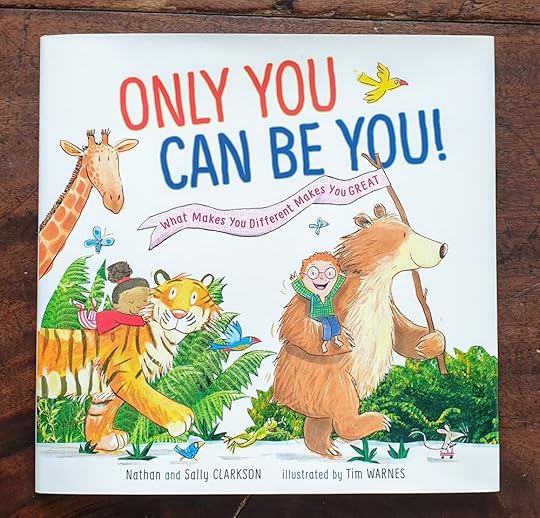 “[A book] that my daughter and I have truly enjoyed!”– Randi,
Modern Day Fairy Tale
“Beautiful pictures [that] will spark conversation with your kiddos.”– Brian D,
GoodReads
buy uk buy us * I EARN COMMISSION FROM THESE LINKS #AD/AFFRELATED ARTICLESSOURCESIt’s Bedtime, Charlie! by Tim Warnes (D Mind & the Prince, 2020)I’m Going to Give You a Bear Hug! by Caroline B Cooney, illustrated by Tim Warnes (Zonderkidz, 2016)I’m Going To Give You a Polar Bear Hug! by Caroline B Cooney, illustrated by Tim Warnes (Zonderkidz, 2020)Only You Can Be You! What Makes You Different Makes You Great! by Nathan and Sally Clarkson, illustrated by Tim Warnes (Tommy Nelson, 2019)What Happened to You? by James Catchpole, illustrated by Karen George (Faber & Faber, 2021)We All Play / kimêtawânaw by Julie Flett
(Greystone Kids, 2021)
The Current State of Disability Representation in Children’s Books
(Margaret Kingsbury, bookriot.com, 28 April 2021)
Disability! Tips for illustrators, by real life disabled publishing people
(Lucy and James Catchpole, 16 February 2022)© 2022 BY TIM WARNES(UNLESS OTHERWISE ATTRIBUTED)****USE OF THIRD PARTY COPYRIGHTED MATERIAL FALLS UNDER FAIR USE/FAIR DEALING PRACTICE.
“[A book] that my daughter and I have truly enjoyed!”– Randi,
Modern Day Fairy Tale
“Beautiful pictures [that] will spark conversation with your kiddos.”– Brian D,
GoodReads
buy uk buy us * I EARN COMMISSION FROM THESE LINKS #AD/AFFRELATED ARTICLESSOURCESIt’s Bedtime, Charlie! by Tim Warnes (D Mind & the Prince, 2020)I’m Going to Give You a Bear Hug! by Caroline B Cooney, illustrated by Tim Warnes (Zonderkidz, 2016)I’m Going To Give You a Polar Bear Hug! by Caroline B Cooney, illustrated by Tim Warnes (Zonderkidz, 2020)Only You Can Be You! What Makes You Different Makes You Great! by Nathan and Sally Clarkson, illustrated by Tim Warnes (Tommy Nelson, 2019)What Happened to You? by James Catchpole, illustrated by Karen George (Faber & Faber, 2021)We All Play / kimêtawânaw by Julie Flett
(Greystone Kids, 2021)
The Current State of Disability Representation in Children’s Books
(Margaret Kingsbury, bookriot.com, 28 April 2021)
Disability! Tips for illustrators, by real life disabled publishing people
(Lucy and James Catchpole, 16 February 2022)© 2022 BY TIM WARNES(UNLESS OTHERWISE ATTRIBUTED)****USE OF THIRD PARTY COPYRIGHTED MATERIAL FALLS UNDER FAIR USE/FAIR DEALING PRACTICE.
April 1, 2022
A one-legged pirate called Joe
 What Happened to You? by James Catchpole, illustrated by Karen George(Faber & Faber, 2021)Good to Read for:teaching about disabilitymodelling friendshipdeveloping empathyI’m so pleased I came across What Happened to You? Finally, a quality picture book whose main protagonist is a disabled child.
What Happened to You? by James Catchpole, illustrated by Karen George(Faber & Faber, 2021)Good to Read for:teaching about disabilitymodelling friendshipdeveloping empathyI’m so pleased I came across What Happened to You? Finally, a quality picture book whose main protagonist is a disabled child. (I’m sure there are others out there, but this is the first I’ve come across.)
“Picture books that try to reflect the reality and particularity of a young disabled child’s experience are still few and far between,” acknowledges its author, Catchpole.
The opening page shows Joe (a one-legged boy) discarding his crutches by a park bench in his rush to climb the play equipment:
Joe was playing his favourite game.
It had sharks.
And possibly crocodiles.
But crocodiles and sharks were no match for pirates like Joe.
There’s no mention of the fact that Joe has just one leg. At this point in the story, he’s just a kid. Because kids with disabilities (like Joe, the shark-fighting pirate) like to play, too.
Joe makes short work of the incoming sharks! They weren’t the problem. Sharks, writes Catchpole, were easy compared to kids Joe hadn’t met yet.
“YOU’VE ONLY GOT ONE LEG!” said a kid.

Catchpole is well placed to write this story. I don’t know about his swashbuckling credentials – but like his character Joe, Catchpole only has one leg. The story is based on his experience as a disabled child and “the challenges of being seen as different by the other children in the playground,” explains Catchpole in an article for Caboodle. “[S]pecifically about the moment another child notices your difference, stops in their tracks, and asks ‘What happened to you?’”
The other kids in the playground bombard Joe with questions about his missing leg:
But where’s your leg?
Here!
But where’s your other leg?
WHAT OTHER LEG?

True, a one-legged character is a Unique Selling Point for a picture book. But what initially attracted me to What Happened to You? are Karen George’s illustrations. They are soft, and she effectively depicts the imaginary aspects by using abstract colours. As with all good picture books, the images add to the child’s understanding of the story, and her expressive characters speak volumes.
A shrug of shoulders here.
A furrowed brow and angry scowl there.
As the playground kids persist with their questioning (and their guesses about the fate of the missing leg become increasingly silly), poor Joe becomes increasingly frustrated. I love Catchpole’s pithy dialogue:
Was it a lion?
Was it a thousand lions?
“Yes,” said Joe,
“It was a thousand lions.”
“REALLY?” said the kids.
“NO!” shouted Joe.

The following image - a silent double-page spread – is poignant and achingly sad. It’s a perfectly captured moment that leaves the reader in no doubt about Joe’s feelings. That’s the power of picture books – they put kids into someone else’s shoes (or, in this case, shoe), which develops an understanding of and empathy for others.

Young kids are naturally curious, and their questions about people who are different to themselves aren’t meant to hurt. As Joe continues with his game, the other kids join in one by one.
“Is that a crocodile down there?” [said Kid One].
And Joe said, “Yes, I think so.”
Before long, Simone (Kid One), Yuto, Caspar, Mainie and Ibrahim (a nicely diverse group themselves) have joined Joe in his game of pirates.

As the story concludes, ‘Joe [has] a question of his own.’
Significantly, the reader isn’t expected to feel sorry for Joe because of his disability. But the way he’s treated by his peers? That’s the clincher.
“Do you still need to know what happened [to my leg]?”
“No!” said Simone.
And Joe seemed happy with that.
“‘What happened to you?’ is a deeply personal question, which taps into all sorts of vulnerabilities,” Catchpole tells DiverseBooks.org. “And there’s a rule about personal questions: We don’t ask them of people we don’t know.”
Disabled people, he argues, appear to be an exception to this rule. And it’s an exception he objects to: Why should disabled children expect to be asked the same question by their peers every time they go into the playground? Why should disabled adults expect to be questioned when queuing at the bus stop or in the supermarket?
What Happened to You? is a double-edged (pirate) sword. On the one hand, Catchpole has deliberately written a picture book that will both reassure and empower disabled kids to set their own boundaries. He also hopes the book will educate parents – and their kids – about how to treat disabled people and develop empathy in their kids.
Catchpole’s agenda doesn’t weaken the story. It’s too well-crafted for that. Instead, his unique perspective strengthens the underlying message that disabled people are just like anyone else, getting on with their busy day. They are not (as Catchpole bluntly puts it) ‘looking to be a teachable moment.’
When it comes to raising emotionally healthy kids, quality picture books like What Happened to You? are a parent’s most valuable tool. They open up opportunities to discuss sensitive issues with your child and teach them that what makes them different makes them great. Most importantly, picture books help develop empathy. Meaning kids like Joe can just get on with the important business of fending off shark attacks and marauding crocodiles.
 STORIES WORTH SHARINGWhat Happened to You? by James Catchpole, illustrated by Karen George(Faber & Faber, 2021)Good to Read for:teaching about disabilitymodelling friendshipdeveloping empathyCopyright © 2021 James Catchpole (Text) & Karen George (Illustrations)From What Happened to You? by James Catchpole, illustrated by Karen George (Faber & Faber 2021)GOOD TO READPicture books involving disability (
as recommended by James Catchpole
)
STORIES WORTH SHARINGWhat Happened to You? by James Catchpole, illustrated by Karen George(Faber & Faber, 2021)Good to Read for:teaching about disabilitymodelling friendshipdeveloping empathyCopyright © 2021 James Catchpole (Text) & Karen George (Illustrations)From What Happened to You? by James Catchpole, illustrated by Karen George (Faber & Faber 2021)GOOD TO READPicture books involving disability (
as recommended by James Catchpole
)Can Bears Ski? by Raymond Antrobus & Polly Dunbar
El Deafo by Cece Bell
I Am Not a Label by Cerrie Burnell & Lauren Baldo
What Happened to You? by James Catchpole & Karen George
This Beach is Loud! by Samantha Cotterill
Lone Wolf by Sarah Kurpiel
Little People, Big Dreams: Frida Kahlo by Isabel Sánchez Vegara & Gee Fan Eng
BUY THE BOOKPowered by Bookshop.orgSupporting independent bookshops
 “A brilliant book to open up the conversation with pre-school kids.”
– Disabilities Arts
“A brilliant book to open up the conversation with pre-school kids.”
– Disabilities Arts
“[Imparts] wisdom and empathy without seeming to do so.” – The Book Activist buy uk buy us * I EARN COMMISSION FROM THESE LINKS #AD/AFF
RELATED ARTICLES
SOURCESWhat Happened to You? by James Catchpole, illustrated by Karen George (Faber & Faber, 2021) 7 Illustrated Books about Disability (Caboodle.nationalbooktones.com)Why It’s Important to Talk to Kids About Disability and “What Happened to You?” (Alania Lavoie, 8 April 2021)© 2022 BY TIM WARNES(UNLESS OTHERWISE ATTRIBUTED)****USE OF THIRD PARTY COPYRIGHTED MATERIAL FALLS UNDER FAIR USE/FAIR DEALING PRACTICE.March 18, 2022
A joyful read
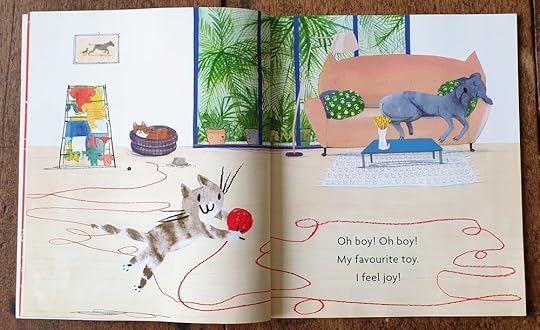 Joy by Yasmeen Ismail, illustrated by Jenni Desmond(Walker Books, 2020)Good to Read for:expressing love to your childengaging your little onea joyful storytime!This week's recommendation is Joy by Yasmeen Ismail, illustrated by Jenni Desmond (Walker Books, 2020). I couldn't resist its cover: a beaming silver tabby kitten leaping after a ball of red yarn!
Joy by Yasmeen Ismail, illustrated by Jenni Desmond(Walker Books, 2020)Good to Read for:expressing love to your childengaging your little onea joyful storytime!This week's recommendation is Joy by Yasmeen Ismail, illustrated by Jenni Desmond (Walker Books, 2020). I couldn't resist its cover: a beaming silver tabby kitten leaping after a ball of red yarn! Those eyes! That smile! Those paws!
Joy's storyline is simple: an effervescent kitten ricochets around the house, leaping and bouncing through the book's pages until eventually, it lands itself in trouble. Cue Mummy Cat, who comes to the rescue and kisses everything better.
There's no deep narrative here. Like my own picture book, I Love You to the Moon and Back, this story is designed to celebrate the love between a carer and a child. With rhythmic, bouncy text and adorable illustrations, Joy does it very well indeed.
The kitten literally launches the reader into the story by boinging and bouncing across the title page after a ball of yarn. Desmond's energetic and joyful illustrations match the tone of Ismail's text beautifully:
Oh boy! Oh boy!
My favourite toy.
I feel joy!
Ismail's simple text is bright and bouncy, notable for using nonsense words in her rhymes. (For example, the kitten clambers up the clothes dryer with a 'jingle jangle' before crashing down in a heap.)
Nonsense words are fun – especially for kids! I've been listening to a fascinating audiobook – Miracles and Wonders: Conversations with Paul Simon by Malcolm Gladwell. In it, Simon discusses the song, The Boxer, whose chorus contains the anthemic refrain, lie-la-lie. Simon was using it as a placeholder until he could come up with some lyrics. But he never managed to – and now he's glad:
"It's so fortunate that [I never could think of any lyrics] because when I sing that song anywhere, all around the world, people sing, lie-la-lie, which takes you back to a deep truth… [W]e love to sing nonsensical sounds. That's just a kind of deep human pleasure…."
– Paul Simon (Miracle and Wonder: Conversations with Paul Simon by Malcolm Gladwell)Part of that pleasure is being taken back to those nonsense rhymes of childhood (Fee-fi-fo-fum!) and picture books like Joy. (I remember reading similar books (for example, Dr Seuss's Mr Brown Can Moo, Can You?) with my own kids.) They become increasingly comforting and familiar by repeatedly sharing the same stories over multiple storytimes.
Back to that kitten, whose antics become progressively more disruptive:
BOUNCE BOUNCE BOING BOING DING-A-LING RING RING Let's sing!
It joyfully bounces across the room after a ball (in the process, knocking over a vase of flowers and abruptly waking the sleeping dog) – but it doesn't care!
Run, run, fun, fun – it's all big smiles and big eyes… until it accidentally crashes into a giant dog.
UH-OH.
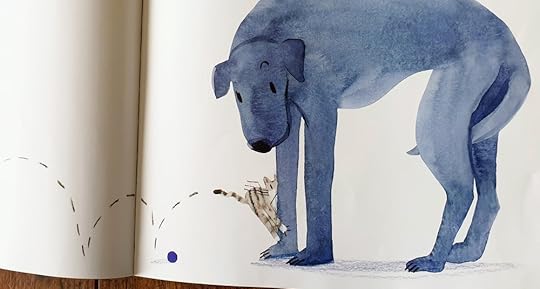
The UH-OH adds a moment of drama. But this picture book is aimed at the youngest of readers, and the potential threat is downplayed. The dog may have raised a quizzical eyebrow, but it stands submissively, tail between its legs. Over the page, it's revealed that the dog is a friend, not a foe. With tail wagging, it joins the game, lolloping after the wary kitten who trips (then slips and flips) out through the cat flap.
OH NO!
(I like how Ismail punctuates her sing-song rhyme with those abrupt words of warning (UH-OH and OH NO!). By breaking the rhythm, they make the reading more enjoyable and create moments of dramatic tension.)
Seeing the kitten tumble down a set of steps is a moment that's guaranteed to engage your child's empathy muscle (always a good thing).
Oh…
This is bad.
I feel sad.
Where's my mum?
Where's my dad?
But thanks to the soft art and gentle writing, it's sensitively handled rather than being a catastrophic (excuse the pun) moment, which is just how little kids like it!. (Some kids will find it gently humorous even.)
The following spread is so tender. Mum cat (or dad? It's not actually specified) is there to lend a helping paw. With a big close up image, and some well-chosen phrases familiar to little kids, Ismail and Desmond create a memorable spread that is tender and relatable.
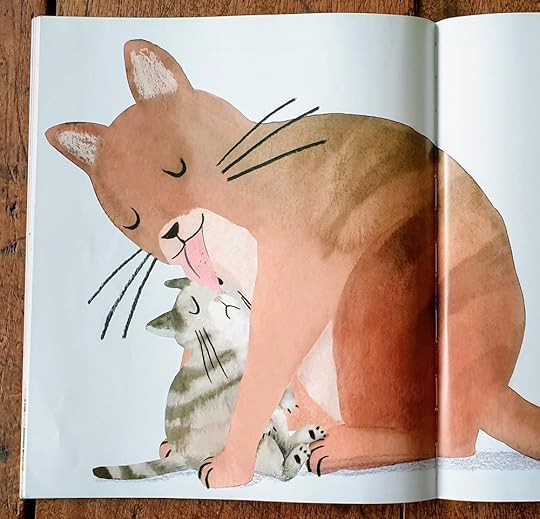
A little hug, a kiss, a squeeze,
Let's check your paws,
And clean your knees.
…
Now look at me, are you all right?
Did you get a little fright?
It's reassuring moment, particularly for kids who are used to having a parent or carer close by to kiss things better.
Kittens – and kids – are quick to bounce back. Before you know it, its off again, leaping with a grin between the legs of the dog after its new 'favourite toy'.
There's more behind Joy's charming simplicity than might at first meet the eye. It's an interactive story, skillfully built around three key elements:I feel joy!
The sing-song language (with its use of nonsense words) is fun for adults to read aloud and kids to listen to.
The dashed line following the kitten's antics is an excellent device to lead the eye through the story. It describes a whole load of action without the need for cumbersome words. Better still, kids will enjoy tracing the movement with their fingers. This immediately adds an element of joy to the reading experience (and helps develop fine motor skills).
The minimal text allows children to 'read' the illustrations for detail and information. Not only does this help capture (and keep) their attention, it also develops both their visual and oral language skills.
Booktrust sums up the appeal of Joy nicely: 'It is a pleasure to read a book which captures a purely happy, upbeat mood'. That alone should be more than enough reasons to share it with your child.
STORIES WORTH SHARINGJoy by Yasmeen Ismail, illustrated by Jenni Desmond(Walker Books, 2020)Good to Read for:expressing love to your childengaging your little onea joyful storytime!Copyright © 2020 Yasmeen Ismail (Text) & Jenni Desmond (Illustrations)From JOY by Yasmeen Ismail, illustrated by Jenni DesmondReproduced by permission of Walker Books Ltd, London, SE11 5HJwww.walker.co.ukGOOD TO READFor celebrating the love between parent and child
Hug by Jez Alborough
I Love You to the Moon and Back by Amelia Hepworth & Tim Warnes
I Love You Forever and a Day by Amelia Hepworth & Tim Warnes
Guess How Much I Love You by Sam McBratney & Anita Jeram
I Love You As Big As the World by David van Buren & Tim Warnes
BUY THE BOOKPowered by Bookshop.orgSupporting independent bookshops
 "My boys (6&8) and I absolutely loved this book!"– Abigail B, NetGalley
"My boys (6&8) and I absolutely loved this book!"– Abigail B, NetGalley "Will bring a smile to both parent and child."– Booktrust buy uk * I EARN COMMISSION FROM THESE LINKS #AD/AFFRELATED ARTICLESSOURCESJoy by Yasmeen Ismail, illustrated by Jenni Desmond (Walker Books, 2020) Joy (bookshop.org.uk)
© 2022 BY TIM WARNES(UNLESS OTHERWISE ATTRIBUTED)****USE OF THIRD PARTY COPYRIGHTED MATERIAL FALLS UNDER FAIR USE/FAIR DEALING PRACTICE.
March 11, 2022
‘Poles Apart’: A funny book to share with the kids!
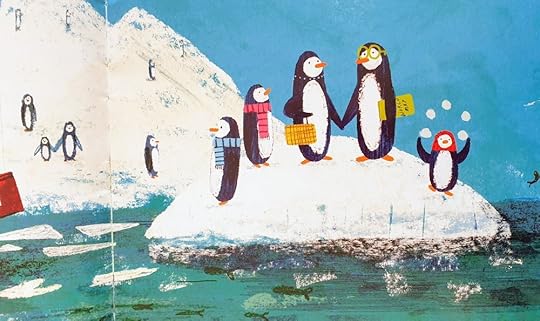 Poles Apart by Jeanne Willis, illustrated by Jarvis(Nosy Crow, 2015)Good to Read for:sharing a giggleencouraging curiositynurturing global citizensToday’s Story Worth Sharing is Poles Apart by Jeanne Willis, illustrated by Jarvis (Nosy Crow, 2015). Its opening line leaves me feeling a bit foolish…
Poles Apart by Jeanne Willis, illustrated by Jarvis(Nosy Crow, 2015)Good to Read for:sharing a giggleencouraging curiositynurturing global citizensToday’s Story Worth Sharing is Poles Apart by Jeanne Willis, illustrated by Jarvis (Nosy Crow, 2015). Its opening line leaves me feeling a bit foolish… As everyone knows, penguins are found at the South Pole and never at the North Pole.
One of the first picture books I ever illustrated (number three, to be precise) was Peter & Pickle’s Puzzling Presents, written by Jane Chapman (Magi Publications, 1995). It features a co-habiting penguin and a polar bear. It never dawned on me that they lived on separate continents (even though the text says Peter the polar was visiting from the North Pole)! Haha!
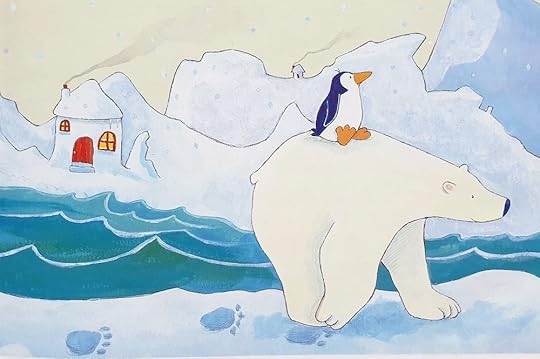
(There was a similar faux pas in I Don’t Want to Go To Bed! by Julie Sykes (Magi Publications, 1994), which happily mixes up animals from Africa and Asia. Surprisingly, nobody’s ever complained!)
But I digress.
Poles Apart is silly, lighthearted fun! (I mean that respectfully: the writing and illustrations are top-notch!) And I think it’s what families – or at least, you grown-ups –could do with right now. A little escape from the heartbreaking 24-hour news cycle.
It features a penguin family (the superbly named Pilchard-Browns) who are adrift on an iceberg, having become ‘lost on their way to a picnic.’
Mr Pilchard-Brown was in charge of the map.
He told everyone to turn right at the snowman.
Which was wrong.
Brilliant!
Willis is well known for her dry wit, and there’s plenty of it in Poles Apart. Little quips and asides are a treat for parents and older kids, while younger siblings can enjoy the tale on a more superficial level. The jokes extend to the illustrations too – for example, the bespectacled Mr P-B is holding the map upside down… Uh-oh!
The unfortunate family (comprising Mr and Mrs Pilchard-Brown and their offspring: Peeky, Poots and Pog) sail across the ocean before finally ‘drifting towards an enormous, furry, white … something’ wearing a miniscule, red bowler hat.
“Is it a lion? Is it a tiger?” asked Peeky and Poots.
“Is it a picnic blanket?” asked Pog.
(Much of the humour is thanks to the penguin children’s outlandish (yet believable) dialogue!)
The enormous something looked them up and down….
“I’m Mr White,” he said.
“I’m a polar bear, and you are?”
“Parrots!” said Peeky and Poots.
“Pork pies!” said Pog.
“We’re penguins,” said Mrs Pilchard-Brown.
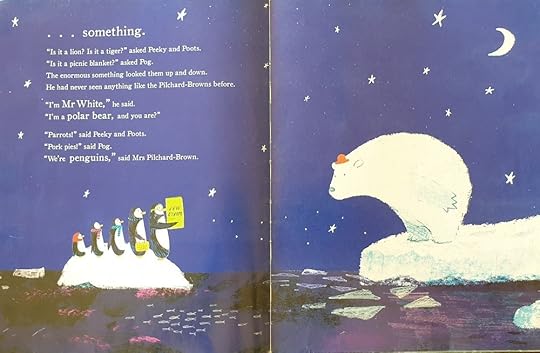
I told you it was silly! (I can just imagine the long-suffering Mrs P-B – stuck on that iceberg with the family – rolling her eyes as she adds, “We’re penguins.”)
For me, one of the reasons Poles Apart stands out is thanks to the dialogue which feels natural and genuine. Willis skillfully captures the haphazard – often overlapping – nature of family chat which lends warmth to the scenes.
Kids especially will love the littlest penguin, Pog! Throughout the story, he asks, “Can we have our picnic?” Another time he announces, “I need a wee.” Finally, eagle-eyed readers will discover that the mischievous Pog is responsible for the surprise ending(s).
In the meantime, he informs the genial Mr White that they’re going on a picnic at the South Pole.
“This is the North Pole, my friends,” said Mr White.
“The South Pole is 12,430 miles that way.”
“So, I was a few miles out,” shrugged Mr Pilchard-Brown.
“Anyone can make a mistake.”
Mr White is just the kind of supportive friend one needs at a time like this:
“Don’t think of it as a mistake,” said Mr White.
“Think of it as a big adventure. I have often dreamt of being the first polar bear to reach the South Pole…”
“Mummy says we should always follow our dreams,” said Peeky.
“Daddy says we should always follow him,” said Poots.
“Lead the way, Mr White,” said Mrs Pilchard-Brown.
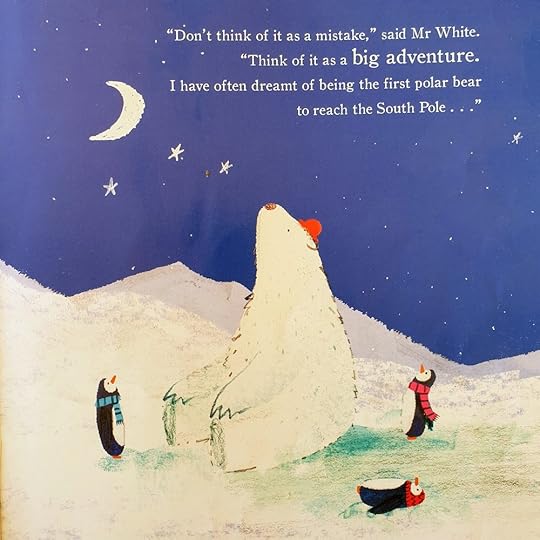
And so begins the next stage of the Pilchard-Browns’ adventure. Adrift once more, they follow Mr White ‘over land and sea.’ Perhaps the polar bear doesn’t really know the way to the South Pole? He certainly takes them a long way round! But he’s a safer bet than Mr P-B (who is still reading the map upside down!)!
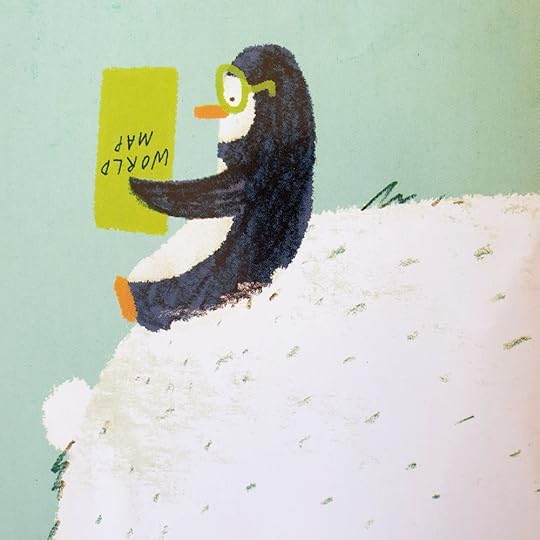
Readers are giving a little geography lesson as the Pilchard-Browns pass through America, England, Italy, India, and Australia. True, they won’t learn very much. But as with How the Sun Got to Coco’s House, it’s a fun way to expand your child’s concept of the wider world and spark curiosity about other cultures. Willis includes a sprinkling of words and phrases that link to each particular country (for example, with the greetings, “Howdy!”, “How do you do?” and “Ciao!”. At the same time, illustrator Jarvis adds visual details to set the scene and add humour. (I especially like England’s spread that shows the gang riding an open-top double-decker bus through London. In the rain!)
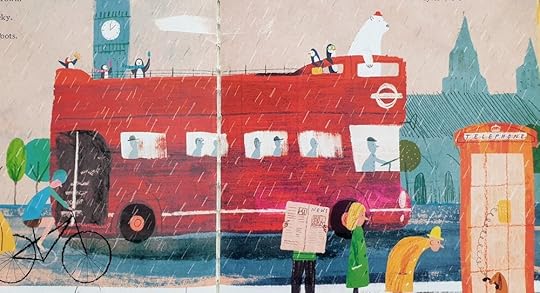
[O]ver the land and over the sea.
On and on they went.
But of all the wonderful places in the world, there was no place like home.
“Are we nearly there yet?” said Peeky, Poots and Pog.
The penguins dutifully follow Mr White until finally, they reach the South Pole. After a brief stay, Mr White says goodbye and walks ‘12,430 miles all the way back to…the North Pole, where he [belongs].’
[Mr White had] followed his wildest dream and had the best adventure. Even so, he was sad to think he would never see a penguin again.
And then the surprise ending.
A penguin chick suddenly hatches from an egg inside Mr White’s hat!
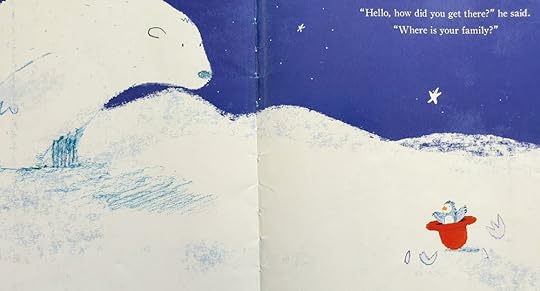
True – it’s a sudden development in the plotline! But it’s a cute moment that will surprise kids. And like me, they’ll want to go back a few pages to find out how the egg ended up in Mr Brown’s hat…
But wait! There’s one final surprise!
Mr White’s penguin friends, the Pilchard-Browns, arrive to collect the latest addition to the family. This time they arrive by air – in a basket carried by balloons.
Yes, Poles Apart is silly and slightly bonkers! This is precisely why kids enjoy it: It’s a lot of fun!
And although the North Pole isn’t home to penguins, Mr White was always happy to see friends.
‘Welcome back!” he said.
And with everything going on in the world right now, perhaps a snuggle and a giggle with your child is just what you need.
But in case you need them, here are some worthy reasons to share it:
It celebrates family and friends.
It models kindness to strangers.
It shows how we are all part of a much larger, global community.
It’s philosophical. (“Don’t think of it as a mistake,” said Mr White. “Think of it as a big adventure.)
It’s inspiring! (“Mummy says we should always follow our dreams,” said Peeky.)
If nothing else, Poles Apart will teach your child that penguins are found at the South Pole. And never at the North Pole. A simple fact that everyone should know!
STORIES WORTH SHARINGPoles Apart by Jeanne Willis, illustrated by Jarvis(Nosy Crow, 2015)Good to Read for:giving kids a giggleencouraging curiositynurturing global citizensPoles Apart by Jeanne Willis, illustrated by Jarvis (Nosy Crow, 2015) Text © 2015 by Jeanne Willis | Illustrations © 2015 by JarvisGOOD TO READFunny picture books to make kids laughYou Must Bring a Hat by Simon Philip and Kate Hindley
There Is a Bird on Your Head! by Mo Willems
This Is Not My Hat by Jon Klassen
Rabbit and Bear: Rabbit’s Bad Habits: Book 1 by Julian Gough and Jim Field
BUY THE BOOKPowered by Bookshop.org
Supporting independent bookshops
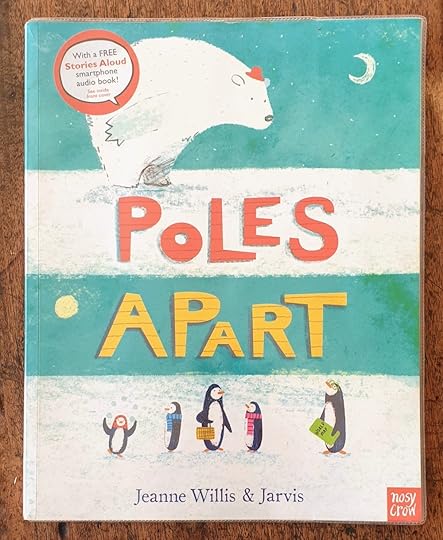 “A funny and charming tale”–
The Huffington Post
“Brilliant and original comic creations”
– LoveReading4Kids
buy uk buy us * I EARN COMMISSION FROM THESE LINKS #AD/AFF
“A funny and charming tale”–
The Huffington Post
“Brilliant and original comic creations”
– LoveReading4Kids
buy uk buy us * I EARN COMMISSION FROM THESE LINKS #AD/AFFRELATED ARTICLES
SOURCES
Poles Apart by Jeanne Willis, illustrated by Jarvis (Nosy Crow, 2015)Peter & Pickle’s Puzzling Presents by Jane Chapman, illustrated by Tim Warnes (Magi Publications, 1995) Poles Apart (Kirkus Reviews, 15 August 2016) Poles Apart (Publishersweekly.com) The Best Children’s Picture Books Autumn 2015 (The Huffington Post, Hannah Beckerman, 7 October 2016) Poles Apart (Penguin Random House)© 2022 BY TIM WARNES(UNLESS OTHERWISE ATTRIBUTED)****USE OF THIRD PARTY COPYRIGHTED MATERIAL FALLS UNDER FAIR USE/FAIR DEALING PRACTICE.
March 4, 2022
How the Sun Got to Coco's House – and why Putin should read it
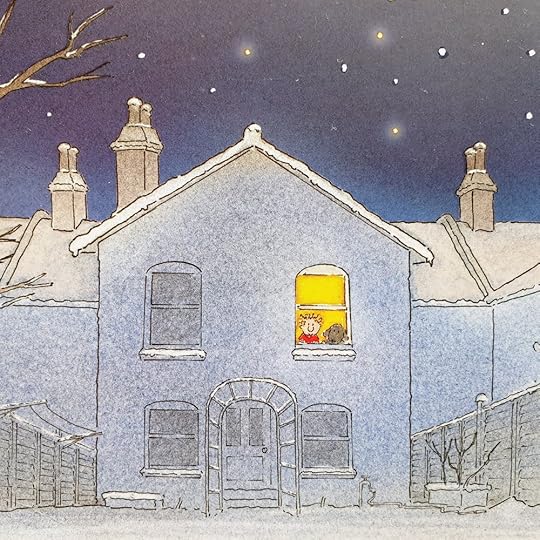 How the Sun Got to Coco's House by Bob Graham(Walker Books, 2015)Good to Read for:encouraging curiositydeveloping empathynurturing global citizensLast Friday afternoon, I walked into town in the sunshine, thankful for my freedom.
How the Sun Got to Coco's House by Bob Graham(Walker Books, 2015)Good to Read for:encouraging curiositydeveloping empathynurturing global citizensLast Friday afternoon, I walked into town in the sunshine, thankful for my freedom. Far away in a distant land, the Russians had begun to invade Ukraine. I thought about an interview I'd read: a young mother fleeing inland to her parents in a bid to keep her child safe. News of families sheltering in underground stations reminded me of Henry Moore's drawings of the London underground during the blitz. I wondered who might attempt to keep the toilets clean.
And I wondered how long it would take the Russians to seize Kyiv.
I went to the library and chose an armful of kids' books. When I got back, I kissed Ed the cat and wondered about pets left behind (and understood why many Ukrainians fled with them).
I began reading the books I'd borrowed. One, in particular, jumped out: the intriguingly titled, How the Sun Got to Coco's House by Bob Graham (Walker Books, 2015).
Graham's stories are quiet yet powerful.He celebrates small wonders and everyday things often overlooked or taken for granted. (A lost button, a stray dog, a rescue chicken, for example.) In the case of this story, it's the sun and how it makes its way across the world to Coco's house.
The story begins pictorially on the opening spreads with illustrations showing a girl (Coco) and a rather plump dog settling down for the night. They are already asleep and being kissed goodnight by the grown-ups on the following page. Outside, a crescent moon sits in a starry sky.
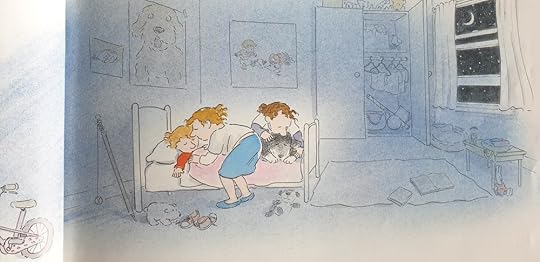
Coco and her dog may be fast asleep. But the sun still has a job to do!
'It had to start somewhere', says the opening line. That 'somewhere' is a snowy Arctic landscape where a family of polar bears trot by.
While Coco slept far away, the sun crept up slowly behind a hill, paused for a moment, seemed to think twice…
before it plunged down the other side and skidded giddy across the water.
The story follows the sun's journey as it moves all the way across the world until it reaches Coco's house. Graham personifies it, which allows for some great descriptions. For example, the sun tumbles, takes shortcuts down sidestreets, and like a faithful friend, waits 'patiently outside an old lady's window to be let in.'
Using the sun as a common thread, Graham connects people and places. It's a clever idea presented in an easy way for kids to understand. The fact that we all share the sun, as one GoodRead's reviewer remarks, is humbling, grounding and comforting.
The sun's journey around the world introduces the reader to some sublime little moments. For example, at one stage, it is 'caught briefly in the eye of a whale'. Elsewhere, Graham describes the sun meeting 'birds still flying south for the winter '. The illustration shows geese flying over a traditional Mongolian yurt, its owner peering out at the new dawn. And high above them all, through a plane's window, peers' young Lovejoy, off to visit his grandma.'
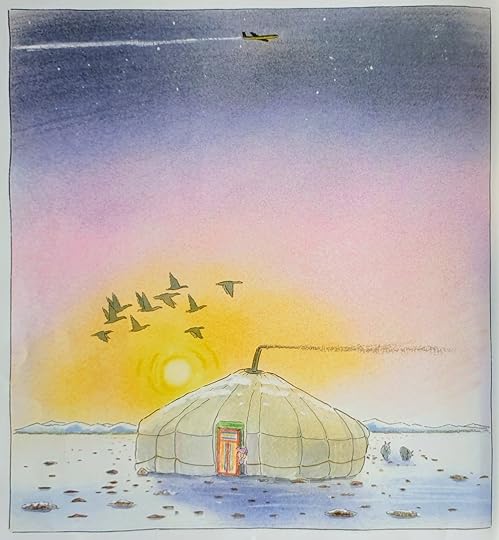
The story is a fantastic introduction to the global community. Despite fleeting cameo appearances, Graham names many of the characters, which gives clues as to the sun's whereabouts. It humanises them and made me curious to learn more about them. So I did a few quick Google searches…
Now I can make an educated guess that Jung-Su, shown walking through the snowy forests, is in the mountainous northeast of Korea.

Then there's 'Kosha and his father on their way to market.' Their page follows the sun waking up panda bears and snow leopards – which I reckon places him in Afghanistan (The name Kosha, appropriately enough, means 'hard-working.')
I know lots of kids are fascinated by maps and other cultures. How the Sun Got To Coco's House is an excellent choice to engage your child's curiosity. And in a curious way, it makes the world a smaller place.
The sun chases the night around the world – all the way to Coco's street where, '[b]old as you like, it extinguished the street lights'.
Finally –
[T]he winter sun barged straight through Coco's window!
It followed her down the hall,
made itself quite at home on her mum and dad's bed
and joined them for breakfast.
Graham is praised for his authentic and warm domestic scenes where clutter is strewn, and clothes lie in crumpled heaps. Coco's home is no exception! A feather popped into a jug, a cupboard door left open, a dog's ball under the table. Familiar touches like this make the characters (and stories) relatable. So when kids read that Alika broke the ice in a puddle somewhere in a small mountain village, they will understand the moment. Not because they've walked those narrow icy streets themselves - but because Graham's character captures what it is to be a curious kid. It's an inconsequential act of no significance – but its details like this that draw kids into Graham's stories and, perhaps more importantly, helps them identify with the characters.
Graham's simple themes are deeply personal. But as his entry in The Oxford Companion to Children's Literature notes, they sometimes act as allegories for world events.Indeed, How the Sun Got to Coco's House feels like it was written for this exact moment in history. (The book is endorsed by Amnesty International 'because it reminds us that this world belongs to all of us and we all have a right to enjoy life, freedom and safety.' It's a sobering thought.)

In a war-torn city, the sun shone hope on Mia and Svyatoslav the firefighters.
With a little tweaking to this photograph's original caption (Firefighters work by a high-rise apartment block which was hit by recent shelling in Kyiv on Saturday), it would fit nicely (if a little jarringly, given the intended audience) into Graham's story. It poignantly emphasises the book's simple truth: we are all connected.
"Through books," explains Graham to Children's Books Daily, "children can imagine what it might be like to be in someone else's shoes. This is surely where empathy starts…and who knows? Then maybe they may have a world with some fear taken out of it."
Like Lennon, Graham's something of a dreamer. But they're not the only ones! I believe that sharing quality picture books like How the Sun with your child creates a precious moment of connection that nurtures children, helping them grow emotionally and relationally. This is why storytime with your kids should be more than just a box-ticking exercise. As current events reveal, it's far more critical than that.
STORIES WORTH SHARINGHow the Sun Got to Coco's House by Bob Graham(Walker Books, 2015)Good to Read for:encouraging curiositydeveloping empathynurturing global citizensHow the Sun Got to Coco's House by Bob Graham (Walker Books, 2015) | Text and illustrations © 2015 by Bob GrahamUsed by permission of the publisherPhotograph of Kyiv from Hindustan Times GOOD TO READPicture books for global citizensKing of the Sky by Nicola Davies & Laura Carlin
Beegu by Alexis Deacon
We All Play by Julie Flett
The Suitcase by Chris Naylor-Ballesteros
Hike by Pete Oswald
BUY THE BOOK
Powered by Bookshop.org
Supporting independent bookshops
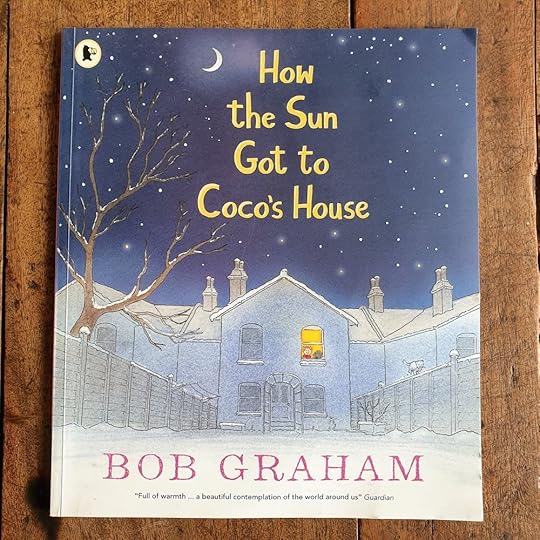 “A clever little book … with a message of hope, and beauty and unity”–GoodReads
“A clever little book … with a message of hope, and beauty and unity”–GoodReads“Absolutely delightful” – North Somerset Teachers’ Book Award buy uk * I EARN COMMISSION FROM THESE LINKS #AD/AFF
RELATED ARTICLES
SOURCES
How the Sun Got to Coco’s House by Bob Graham (Walker Books, 2015) Zelensky says Ukraine halted Kremlin bid to capture Kyiv, curfew toughened (hindustantimes.com, 26 February 2022)The Oxford Companion to Children's Literature (Second Edition) by Daniel Hahn (Oxford University Press 2015) Book People: Bob Graham (childrensbookdaily.com, 13 July 2015)February 25, 2022
Birdsong
 Birdsong by Julie Flett(Greystone Kids, 2019)Good to Read for:encouraging independencedeveloping curiosity about the worlddiversifying your child’s bookshelfLast week, I recommended The Frank Show, starring Frank, who becomes a hit with his grandson’s classmates. This week’s pick features another intergenerational friendship: the ‘emotionally stunning’ Birdsong, by Cree-Métis writer and artist Julie Flett.
Birdsong by Julie Flett(Greystone Kids, 2019)Good to Read for:encouraging independencedeveloping curiosity about the worlddiversifying your child’s bookshelfLast week, I recommended The Frank Show, starring Frank, who becomes a hit with his grandson’s classmates. This week’s pick features another intergenerational friendship: the ‘emotionally stunning’ Birdsong, by Cree-Métis writer and artist Julie Flett.Birdsong describes the growing friendship ‘between two neighbors, an older artist named Agnes, and a young girl, Katherena, told from the child’s point of view.’
The story begins in Spring. Katherena is seen looking out her window on a ‘mucky’ morning. It’s moving day, and Katherena feels anxious. The gloomy, rainy morning helps convey her sense of sadness:
I’m going to miss my friends and cousins and aunties and uncles. I’m going to miss my bedroom window and the tree outside.
“Goodbye, tree friend,” I whisper.
From the illustration, we see that it’s just Katherena, her mother and her dog who are moving house. Their new home sits in a field ‘covered in snowdrops’ and ‘has two trees outside’. (Upgrade!)
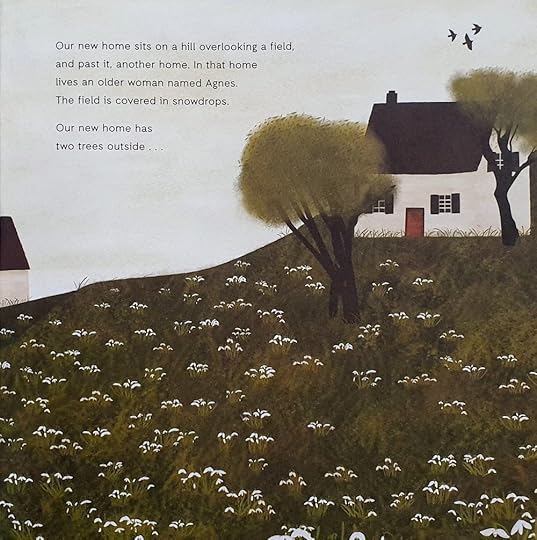
Unfortunately, the move dampens Katherena’s creative spirit. Her hands, the text tells us, are cold, and she doesn’t feel like drawing. Instead, she bundles up in a warm bed with her mother – ‘in our new home in the country, far from the sea.’
In each of the headered, double spreads that divide Birdsong into seasons, Katherena is shown sprawled on the floor, drawing. It’s a neat way to show the passing of time while also depicting Katherena, the artist. (As an artistic child herself, Flett spent hours drawing and making things.)

Summer arrives.
Our new home hums with peeps and whistles and ribbits and chirps.
I love that line! It’s so evocative of the season and suggestive of how Katherena’s feeling more settled and looking to the future.
I watch Agnes, our neighbor, working on something in her yard.
“Why don’t you visit her, Katherena?” my mom says.
I nod. “Okay.”
I take our dog, Ôhô, with me.
Ôhô means owl in Cree.
As with Flett’s picture book for young readers, We All Play, Flett’s sprinkling of Cree words feels entirely natural. Their inclusion is not forced. It’s seamless and without agenda.
“The Cree words that I used in the book came organically to the story,” explains Flett (a Cree-Métis artist) in an interview with Kirkus Reviews. “It was natural to the conversations between Katherena and Agnes.”
It makes for believable characters. But there’s a more profound significance to the inclusion of Katherena as a Cree-Métis character:
It’s essential for all kids – including indigenous children – to see themselves represented in kids’ books.
It broadens your child’s view of the world.
Inclusivity – diversity – within picture books creates a connection between children from different cultures and backgrounds. This feels even more appropriate with Birdsong, which is all about relationships - between generations, within families, with nature and the changing seasons.

The introduction between Agnes and Katherena is tender and retains some awkwardness that makes it feel believable. (Katherena stands with her hands behind her back.) Agnes has learnt from Katherena’s mother that she likes to draw. Agnes herself ‘loves to make things out of clay’, and these kindred spirits quickly connect. Meeting and befriending Agnes is the spark Katherena needs to reignite her creativity. (After their initial afternoon together, Katherena ‘can’t wait to go home and start drawing.’)
For both Katherena and Agnes, their art helps them explore and respond to the world, and it’s something they bond over. Their friendship grows as Katherena visits Agness again and again. Come fall, she’s helping Agnes in the garden, ‘gathering extra leaves that’ll get mixed into the soil. The worms love this.’

Flett drops a clue as to where this is leading –
It’s getting cold and windy and creaky.
Agnes says she’s getting creaky too.
Inside, Agnes shows Katherena what she’s working on – ‘a pot that’s round and bright.’
She tells me about waxing and waning moons.
I tell her about Cree seasons. This month is called pimihâwipîsim – the migrating moon.
(You’ll find a handy glossary of the Cree words – with a pronunciation guide – at the start of the book.)
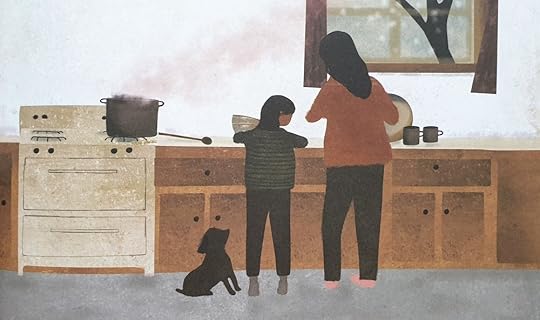
Winter brings Ôhô’s first snow. Katherena and her mother make a salmon stew to share with Agnes, strengthening Flett’s theme of community and friendship. In return, Katherena is sent home ‘with a cup full of snowdrop bulbs to plant in the field next autumn.’
They look like tiny moons.
They give me more ideas for pictures.
A whole year passes, and the snowdrops are in flower again. But ‘Agnes has grown weaker over the winter.’
Katherena sits on her frail friend’s bed. They listen together to the spring song of birds outside and ‘the tickle of branches against [the] window.’
Suddenly Katherena has an idea and rushes home to gather up her drawings. With help from Agnes’s daughter (who came to stay for a while), Katherena brings the Spring inside to Agnes by covering her bedroom walls with drawings.
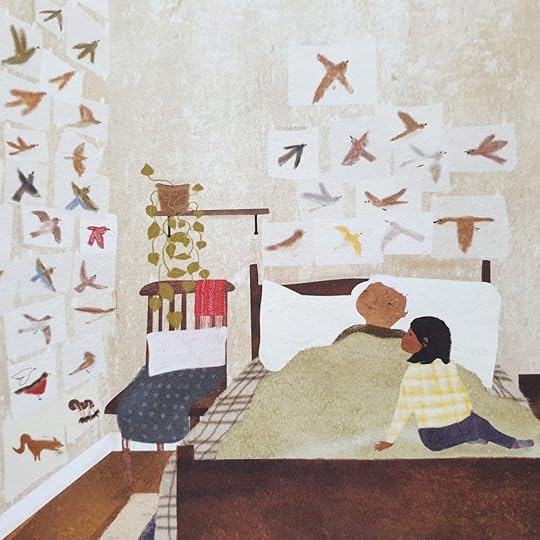
When we’re done, Agnes says it’s like a poem for her heart.
Then I sit with Agnes and talk about making things:
Mucky things and things with string and song
And paper and words. And then we sit quietly together, on Agnes’s bed, until it’s time to say goodbye.
I leave with an ache in my heart, but I’m so glad to know Agnes.
The ending is sensitive and age-appropriate. It’s a beautiful scene of Katherena’s home at night, under ‘ayîkipîsm, the frog moon’. There’s nothing explicit to say that Agnes has died. But it’s implied in the concluding line, which also affirms Katherena’s emotional journey:
My hands feel warm and the covers feel soft,
And I think of my friend until I fall asleep.
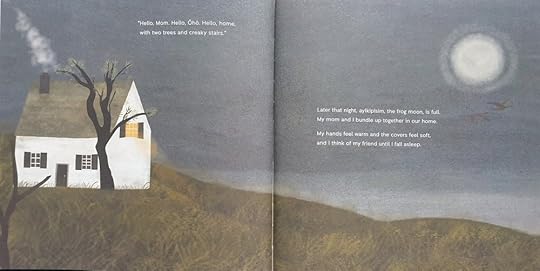 Death might seem a strange topic for a picture book to touch upon.
Death might seem a strange topic for a picture book to touch upon. And it’s true, there aren’t a vast number out there. Those that do exist invariably feature a grandparent who ultimately meets their demise. (Last week, I noted that The Frank Show was significant in its portrayal of the grandad Frank because he lives to spin a yarn another day!) But death surrounds us – our children included – and is something that we all have to face. (To quote Bruce Springsteen, “Everything dies, baby, that’s a fact.”) So picture books like Birdsong that depict the cycle of life and handle the theme with sensitivity are a valuable tool for parents.
Birdsong is about many things. Love. Art. Friendship and community. The changing seasons. Ageing and loss. Life and death. One GoodReads reviewer bemoaned Birdsong for being “too heavy for what I want in a picture book.” (Which is a shame – because he’s missing the point of Flett’s story and picture books in general.) I guess if all you’re after is a light-hearted, crash-bang-wallop story with a bit of toilet humour thrown in for good measure, then it’s definitely not the book for you.
Birdsong is, however, an excellent choice if you’re after a gentle, meaningful story to spark conversation with your child and expand your child’s understanding of the world.
Agnes sees Katherena as an equal. In that sense, theirs is a true friendship (so tenderly portrayed by beautiful prose and illustrations) that cuts across the generations. Age is no barrier to these kindred spirits. And it’s their intergenerational friendship that makes this book unique and a particularly poignant story for grandparents to share with their grandkids.
STORIES WORTH SHARINGBirdsong by Julie Flett(Greystone Kids, 2019)Good to Read for:encouraging independencedeveloping curiosity about the worlddiversifying your child’s bookshelfBirdsong by Julie Flett (Greystone Kids, 2019) | Text and illustrations © 2019 by Julie FlettGOOD TO READIntergenerational FriendshipsThe Green Ship by Quentin Blake
Granpa by John Burningham
My Uncle is a Hunkle says Clarice Bean by Lauren Child
Grandad’s Island by Benji Davies
King of the Sky by Nicola Davies and Laura Carlin
Birdsong by Julie Flett
BUY THE BOOKPowered by Bookshop.org
Supporting independent bookshops
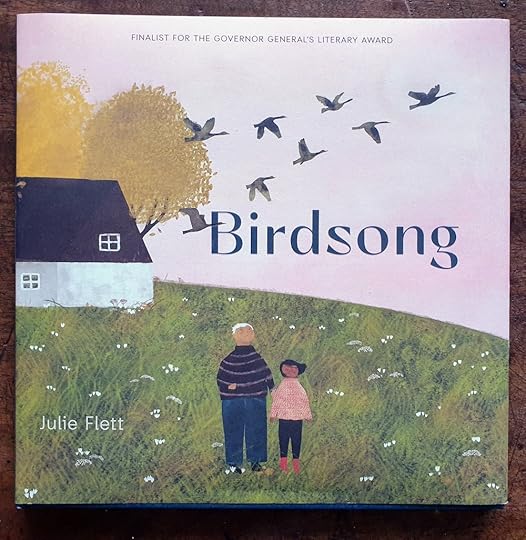 “My daughter and I were enchanted by the simplicity and sweetness of the story.”– Lindsey,
GoodReads
“Beautifully portrays [how] human connections are strengthened through love of art and nature.”– The Horn Book Magazine Buy US Buy UK * I EARN COMMISSION FROM THESE LINKS #AD/AFFRELATED ARTICLES
“My daughter and I were enchanted by the simplicity and sweetness of the story.”– Lindsey,
GoodReads
“Beautifully portrays [how] human connections are strengthened through love of art and nature.”– The Horn Book Magazine Buy US Buy UK * I EARN COMMISSION FROM THESE LINKS #AD/AFFRELATED ARTICLEShttps://www.timwarnes.com/blog/2022/2...
https://www.timwarnes.com/blog/2021/7...
https://www.timwarnes.com/blog/2021/1...
SOURCESBirdsong by Julie Flett (Greystone Kids, 2019)https://www.artofthepicturebook.com/-check-in-with/2021/3/30/an-interview-with-julie-fletthttps://www.goodreads.com/en/book/show/46015798-birdsonghttps://www.artofthepicturebook.com/-check-in-with/2021/3/30/an-interview-with-julie-fletthttps://forum.teachingbooks.net/2019/12/guest-blogger-julie-flett/https://wakingbraincells.com/2019/12/03/review-birdsong-by-julie-flett/Bruce Springsteen, Atlantic City lyrics © Sony/ATV Music Publishing LLC, Universal Music Publishing Group© 2022 BY TIM WARNES(UNLESS OTHERWISE ATTRIBUTED)****USE OF THIRD PARTY COPYRIGHTED MATERIAL FALLS UNDER FAIR USE/FAIR DEALING PRACTICE.February 18, 2022
Introducing Grandad Frank – a real class act
 The Frank Show by David Mackintosh(HarperCollins, 2012)Good to Read for:celebrating grandparentsa longer bedtime storysharing a joke with your childPicture books about grandparents, notes a GoodReads reviewer, are hard to pull off. There is a fine line between heartwarming and way-too-sentimental. (I list some at the end of this article which are well worth sharing with your kids.) The Frank Show by David Mackintosh does it exceptionally well. And reveals that there is more to the older generation than meets the eye.
The Frank Show by David Mackintosh(HarperCollins, 2012)Good to Read for:celebrating grandparentsa longer bedtime storysharing a joke with your childPicture books about grandparents, notes a GoodReads reviewer, are hard to pull off. There is a fine line between heartwarming and way-too-sentimental. (I list some at the end of this article which are well worth sharing with your kids.) The Frank Show by David Mackintosh does it exceptionally well. And reveals that there is more to the older generation than meets the eye.The story hangs on the teacher’s assignment: talk about a family member at Friday’s show and tell.
‘We can choose one person and talk for one minute, about the things they like and what kind of person they are,’ says our narrator (an unnamed boy). To his dismay, the only person not too busy to talk at home is Frank.
But Frank is just a grandad.
Frank always says,
“These days there are too many gadgets and gizmos. I prefer doing things the old-fashioned way.”
(Like writing on a Prehistoric-branded typewriter and listening to music on the gramophone. (“They don’t make ’em like that anymore.”) He even has a folding ‘bellows’ camera.)
As the week goes by, the boy grows increasingly concerned about his presentation. He gives his teacher the heads up:
Today I told my teacher that Mum was very busy and Dad had a very long day, so the only person left in my family to talk about was Frank, my grandad. She said, “Fabulous!”, but I don’t know about that.
And then there’s Frank. (His grandson’s dismay is palpable.)

Grandad Frank is such a well-crafted character. Cantankerous and set in his ways, Frank doesn’t like ‘fancy’ food and claims to only need an annual haircut. (‘[H]e doesn’t trust barbers. He says, “If it ain’t broke, don’t fix it. I can do without their input.”)
Mackintosh couldn’t be accused of being sentimental in his depiction of Grandad Frank. Yes, he’s a caricature of the archetypal old man. But Mackintosh’s observations aren’t cruel. They’re loving. And funny! I remember enjoying it with Levi when he was younger (and caught myself laughing aloud as I revisited it for this review). The illustrations are packed with small, incidental details that make the scenes so believable (especially in the characters’ body language), and the writing is deadpan:
[Frank] doesn’t trust doctors as far as he can throw them, which isn’t far on account of his arm.
And one of his hips.
Mackintosh’s exuberant and stylised illustrations appear deceptively simple. In one double spread, a playground scene features well-observed characters and many charming, incidental details. Together, they convey deeper meaning and emotion (making this another excellent story to develop a child’s empathy). We learn from the left-hand page that the narrator’s classmates all have exciting people to talk about. (For example, Tom’s uncle (a drummer), Donny’s dad (he ‘works in a crisp factory’) and Hugo’s stepbrother who ‘has a sports car, with an eightball gear knob.’) On the far right of the page, our narrator stands apart from the crowd, alone and melancholy. All he can think about is the impending doom of Friday’s show and tell.
In a smaller (quieter) typeface, he says, My grandad’s arm hurts when it’s about to rain.

You can’t help feeling sorry for the kid! He even falls out with his best friend, Tom, who leaves him shamed and red-faced:
Tom asked me why I chose Frank for my talk, because Frank’s just a grandad.
I didn’t know what to say.
So now Tom and me aren’t speaking.
Even young kids will pick up on the inferred emotions felt by the narrator, thanks to Mackintosh’s well-observed characters and subtle use of colour, language and design. As the day of reckoning looms closer, the boy is illustrated using just sad, grey tones.

Finally, it’s the day of show and tell.
In class, everyone is excited.
They have all spoken for a full minute each about a member of their family, even Clive Martin.
On one page, the excited rabble enjoys their crisps. (Remember? Donny’s dad works in a crisp factory!)

Opposite, our narrator stands alone again. The way he reluctantly introduces Frank speaks volumes – the boy can’t even bring himself to look at his classmates.
He ‘approaches show-and-tell like a prisoner headed for the gallows,’ notes Publishers Weekly, ‘but there’s more to Frank than his grandson realises.’

Frank himself may be a caricature of old-timey grandads, but that’s what makes him funny – and totally believable. For the presentation, he’s dressed in his old-fashioned British army uniform, complete with odd socks). Armed with nothing more than a rattan carpet beater and his giant jar of Strong Pickled Onions.

(It reminded me of a photo of my dad and Levi, wearing hats from the American civil war. Levi has a hobby horse. Dad is standing to attention – with a leek!)
After telling them everything he knows about Frank, the boy hides behind his sheet of paper. Everyone is looking straight at him.

And that’s when Frank comes into his own and
However, much to the little boy’s surprise, Grandad Frank puts on a show, spinning tales of his wild adventures and dazzling his classmates!
Frank begins to tell a story about how he led an army in a charge across a muddy battlefield…
with bullets
whistling all around
like African bees…
and captured one hundred enemy soldiers with nothing but his wit and brute force…
and how later…he and his buddies had a green tattoo put on their arms to remember that day.
I love the final spread!

The excited class are gathered around a table strewn with coloured plastic combs that Frank keeps in his pocket. Our narrator is beaming, sitting beside his grandad. Frank rolls up his sleeve to show off his tattoos. (Sheldon Robe asks if getting a blurry tattoo hurts and Frank winks and says, “You bet it did, hombre.”) The children are enthralled! Gathered around the table, they recall all Frank’s interesting anecdotes: He keeps a real Japanese sword under his bed… He can catch a fly with his bare hand…He has a rubber band ball that is 28 years old…
And everybody cheered for my grandad Frank and me.
The Frank Show is funny! (And, unusually for a book featuring older people, Frank survives the end of the picture book..!) In his oversize, yellow-tinted spectacles, Frank is ‘a charming homage to grandparents and the art of seeing beneath the grumpy exterior.’ [Brain Pickings] In that respect, The Frank Show is an excellent choice for celebrating and connecting the older generation with their grandkids.
My own grandad had a grumpy exterior. He talked a bit about his wartime experiences (“What you need, son, is 3 months in the Ardennes…”). What I didn’t discover, until after his death, was that he’d released prisoners from the Nazi concentration camp at Belsen. It would have helped me understand him more – and given me more grace for him. With a bit of luck, this story will encourage children to learn more about their own grandparents’ past.
(My kids are still amazed that, as a young girl, Grandma was strafed by German bombers AND had her tonsils removed on the kitchen table. As for Grandad, he rescued Old Master drawings from the fire at Windsor Castle in 1992.)
But perhaps more importantly, The Frank Show reminds us that the world is made of unique individuals with their own stories to tell. There are unsung heroes everywhere! Grandad Frank’s a curmudgeonly old man. He could just as easily have been a shy child, for example, or an autistic kid – any outsider with hidden interests and life experiences. Scratch away at the surface, and you’ll discover all kinds of interesting facts about people that shape their personalities and behaviours. You just have to take the time to get to know someone – which has got to be a lesson worth sharing with your kids.
 STORIES WORTH SHARINGThe Frank Show by David Mackintosh(HarperCollins, 2012)Good to Read for:celebrating grandparentsa longer bedtime storysharing a joke with your child Text excerpts & Illustrations © 2012 by David MackintoshGOOD TO READCelebrating the older generation!
STORIES WORTH SHARINGThe Frank Show by David Mackintosh(HarperCollins, 2012)Good to Read for:celebrating grandparentsa longer bedtime storysharing a joke with your child Text excerpts & Illustrations © 2012 by David MackintoshGOOD TO READCelebrating the older generation!My Grandpa by Marta Altés
The Green Ship by Quentin Blake
Granpa by John Burningham
Grandad’s Island by Benji Davies
Birdsong by Julie Flett
The Frank Show by David Mackintosh
Last Stop On Market Street by Matt de la Peña and Christian Robinson
BUY THE BOOKPowered by Bookshop.org
Supporting independent bookshops

“Wise and heart-warming” Booktrust
“A sweet story that proves elderly relatives can be cool after all."
- School Library Journal
BUY US Currently unavailable on UK Bookshop.org* I EARN COMMISSION FROM THESE LINKS #AD/AFFRELATED ARTICLESSOURCESThe Frank Show by David Mackintosh (HarperCollins, 2012) The Frank Show (Profusely Illustrated) The Frank Show (GoodReads 1 August 2012)Check out my other recommendations for Celebrating Older Generations! BOOKSHOP - US BOOKSHOP - UK * I EARN COMMISSION FROM THESE LINKS #AD/AFF© 2022 BY TIM WARNES(UNLESS OTHERWISE ATTRIBUTED)****USE OF THIRD PARTY COPYRIGHTED MATERIAL FALLS UNDER FAIR USE/FAIR DEALING PRACTICE.February 11, 2022
Kitten Nora and the Phase of Defiance!
(My editor was right on both counts! Unfortunately, Heute hab ich WUT IM BAUCH! by Anna Böhm (Oetinger, 2021) is currently only available in German.)
Most pre-schoolers feel things intensely – and the book’s main character, an endearing little kitten, named Nora, is no exception!
We put it down to ‘the terrible twos’ here in the UK. In Germany, they call this the ‘Trotzphase’. Literally, the phase of defiance.
Oetinger’s goal was to create a fun picture book that would help little ones and their parents to get through this tricky stage. From that point of view, Heute hab ich WUT IM BAUCH! (which translates as Today I have ANGER IN MY STOMACH! but sounds rather gripping as Kitten Nora and the Phase of Defiance!) is successful.
I’ve illustrated this theme before, notably NO! by Tracey Corderoy (featuring the adorable Archie). Depicting such intense emotions in cute characters is great fun. I grew up reading comics (I still read them today) and welcome the opportunity to channel their visual language into my own work.
Here’s Archie, freaking out in Indonesian!

Remember Max, the wolf-suited boy from Where The Wild Things Are? He paved the way for picture books characters like Nora and Archie. (Sendak describes Wild Things as beginning ‘with a child in rage.’)
Published in 1963, it was radically different from picture books that came before and marked a change in how they depicted children (since it confronted ‘negative’ childhood emotions head-on). Equally groundbreaking, Wild Things wasn’t created to modify a child’s behaviour by modelling sugar and spice and all things nice. Max and his Wild Things opened wide the gates for picture books that depict kids’ emotions and experiences as they are, warts and all.
“We are squeamish. We are Disney-fied,” bemoaned Sendak. “We don’t want children to suffer. But what do we do about the fact that they do? The trick is to turn that into an art.”
It’s okay to be angry sometimes. But it’s unhealthy to hold on to anger, as this Buddhist saying eloquently teaches:
“Holding on to anger is like grasping a hot coal with the intent of throwing it at someone else — you are the one who gets burned.”
(Paraphrased from the work of Buddhaghosa in Visuddhimagga IX, 23 by James Clear.)
We must teach our kids how to handle their negative emotions and learn ways to calm themselves down. And that’s where Angry Nora comes into its own.
Nora’s day begins well enough. She is bright and cheery and keen to persuade her friend, Pauli, to join her outside.
“We can swing and run around. It’s going to be fun,” Nora calls out.
“Nope,” Pauli says. “I want to draw.” …
“Alright,” says Nora. “Then I’ll draw with you.”
But Pauli is content drawing alone:
“No!” says Pauli. The no sounds very loud…. Oh! That was mean of Pauli.
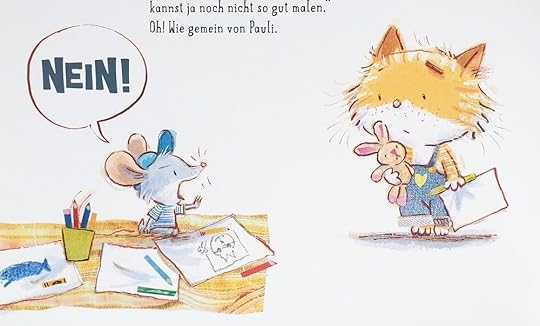
Unable to handle the rejection and her emotions, Nora grabs a pencil and ‘makes a fat dash’ on Pauli’s picture. Uh-oh!
[image error]Eddi, the donkey, is busy in his repair shop. He’ll play later, he tells Nora, just not right now.
[image error]
Later? What’s that supposed to mean?!
Nora gets angry and starts screaming – really loud!
ICH WILL ABER JETZT! BUT I WANT TO NOW!
She stomps off to the kitchen, where Schäfli the sheep is baking a cake.
“Hey there!” says Schäfli. “Would you like some cherries?”
Oh yes, Nora would like that very much! The cherries taste sweet.
Nora’s smile doesn’t last, though.
She climbs onto a shelf, only to be put back down by Schäfli.
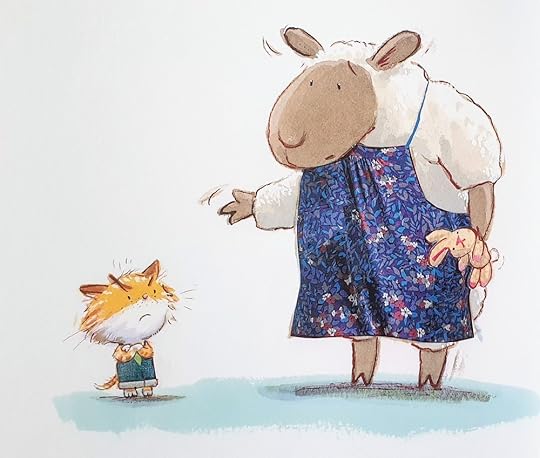
“You’re still too young, Nora. You could fall and hurt yourself.”
Nora knows that she is small! Schäfli doesn’t have to tell her that.
Nora gets angry again. And if you get angry for the third time in a day - well, watch out! Because the anger is powerful.
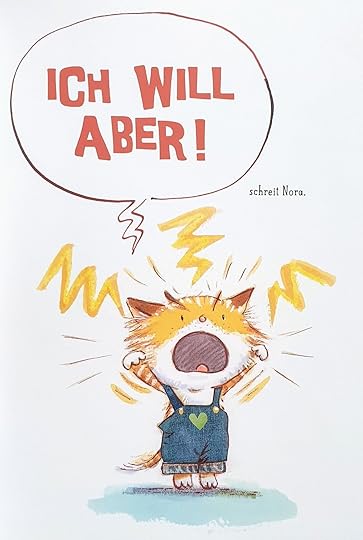
I love how Böhm describes Nora’s all-consuming anger:
Nora will nicht zuhören. Ihre Wut ist jetzt überall. Im Kopf. Im Bauch. In den Füßen. In den Händen. Und weil sie so stark ist, muss sie unbedingt raus.
Nora doesn’t want to listen. Her anger is everywhere now. In her head. Her belly. In her feet and her hands. And because it’s so strong, she absolutely has to get it out.
The more Schäfli tries calming things down, the angrier Nora becomes. Until finally, Schäfli snaps!
“I don’t like it when you yell, Nora,” exclaims Schäfli. “I was just so happy. But you’re ruining my good mood.
She takes Nora outside to calm down. “You can rage here.”
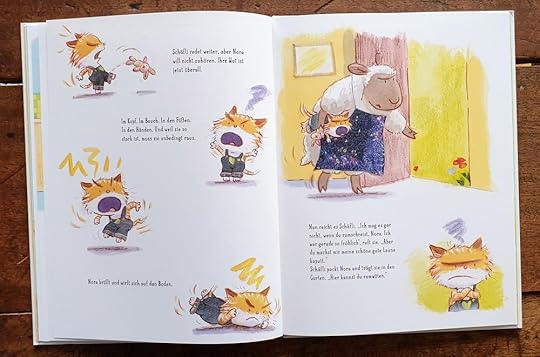
Lollo (an elderly sausage dog) is relaxing in the garden under the cherry tree.
Lollo is like the wise old sage. A peaceful presence.
He can’t help but notice Nora’s tantrum. But he gives her the space she needs.
After a while, he brings Nora some sticks, which she snaps in half.
[image error]It feels good, and some of Nora’s anger leaves her hands.
Lollo nods.
He sits down next to Nora. As she yells, more anger escapes from her mouth. When she jumps and stomps, the anger comes out of her feet.
I love the following line:
Diese Wut ist ein schlimmes Gefühl, aber auch ein schönes, weil sie so stark ist. Und weil sie überall ist.
Anger is a bad feeling, but a nice one, too, because it is so strong. And because it’s everywhere.
It contains so much truth.
Anger is all-consuming and destructive. (‘For anger,’ as Ecclesiastes 7:9 warns, ‘lodges in the heart of fools.’)
But when someone does you wrong, anger can be energising and powerful. People love to feel righteously angry. (And sometimes, that’s appropriate.)
Yep! Anger’s a complicated emotion, alright!
Lollo puts his big paw on Nora’s back. The paw is soft and warm.
He listens then hands Nora more sticks.
Nora breaks them into pieces. Some sticks are longer. Some shorter. Some are crooked. Nora lays out a pattern.
Suddenly she realises that she isn’t yelling anymore.
“Do you get angry, too?” she asks her friend.
“Sure!” says Lollo. “Everyone gets angry sometimes. It’s a part of life. Then I run wildly through the garden and throw things!”
How wise!
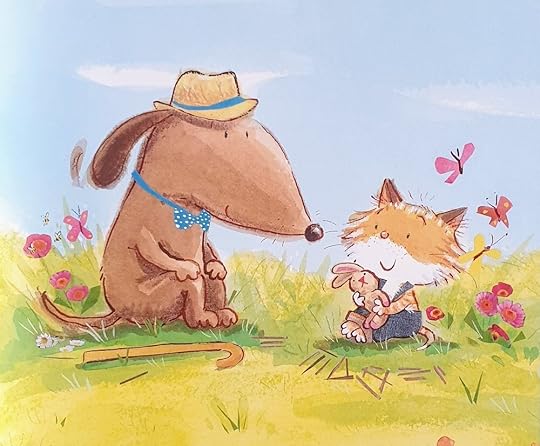
After a mishap with the cake, it’s Shäfli’s turn to explode. (Think, Sheepzilla!)
Fortunately, Kitten Nora is on hand to offer a gentle paw and reassuring words.
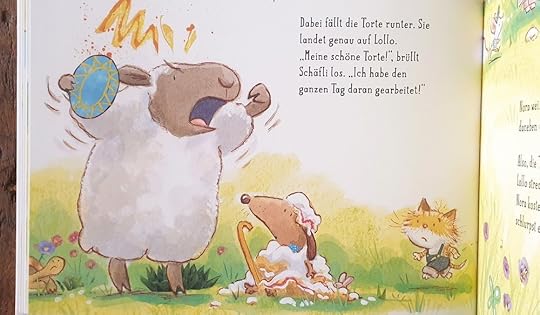
Nora’s the epitome of a wise counsellor – until Lollo pops up from underneath the trashed cake. Then Nora explodes again. Only this time, with laughter.
Quality picture books that tackle difficult emotions are a gift to families.
Nora’s laughter is everywhere! In her head. Her belly. In her feet and her hands. The more she laughs, the stronger and more wonderful the feeling becomes.
Her friends start laughing, too. Even Shäfli’!
“I think I just freaked out, too,” says Sheeply with a giggle.
Nora nodded. “We both did”, she says. “But don’t worry. Everyone gets angry sometimes. It’s a part of life!”
Many address children’s worries and concerns. Others (like ‘Angry Nora’) prompt you to listen attentively to your kids when they have a meltdown. They offer strategies to help families search beneath the unwelcome behaviour for the root cause. But most importantly, they give kids the words to express their feelings which helps them grow and thrive.
If that can be achieved by sharing a laugh over a story with your child, then everyone’s a winner!
Text excerpts © 2021 by Anna Böhm | Illustrations © 2021 by Tim Warnes GOOD TO READFor navigating difficult emotionsNO! by Tracey Corderoy & Tim Warnes
Penguin by Polly Dunbar
A Little Bit Worried by Ciara Gavin & Tim Warnes
The Colour Monster by Anna Llénas
Tiger Lily by Gwen Millward
Me and My Fear by Francesca Sanna
Where the Wild Things Are by Maurice Sendak
Buy these titles from my Bookshop buy uk buy us * I EARN COMMISSION FROM THESE LINKS #AD/AFFPowered by Bookshop.orgSupporting independent bookshopsRELATED ARTICLESSOURCESHeute hab ich WUT IM BAUCH! by Anna Böhm, illustrated by Tim Warnes (Oetinger, 2021)WILD THINGS! Acts of Mischief in Children’s Literature by Betsy Bird, Julie Danielson and Peter D. Sieruta (Candlewick Press, 2014)Fierce Bad Rabbits: The Tales Behind Children’s Picture Books by Clare Pollard (Fig Tree, 2019)Where the Wild Things Are by Maurice Sendak (Harper & Row, 1963) Why don’t more children’s books feature negative emotions? Plus, helpful resources! (bookriot.com, Megan Mabee, 7 February 2022) The ESV® Bible (The Holy Bible, English Standard Version, Good News Publishers, 2021) 3-2-1: On attracting luck, taking risks, and the ineffectiveness of anger (Jamesclear.com, 18 February 2021)© 2022 BY TIM WARNES(UNLESS OTHERWISE ATTRIBUTED)****USE OF THIRD PARTY COPYRIGHTED MATERIAL FALLS UNDER FAIR USE/FAIR DEALING PRACTICE.February 4, 2022
Owl Moon
 Owl Moon by Jane Yolen, illustrated by John Schoenherr(Philomel Books, 1987)Good to Read for:creating calm before bedits sense of adventurenurturing a sense of wonderI thought I’d continue last week’s theme (night walking) and share the magical Owl Moon by Jane Yolen (illustrated by John Schoenherr) with you.
Owl Moon by Jane Yolen, illustrated by John Schoenherr(Philomel Books, 1987)Good to Read for:creating calm before bedits sense of adventurenurturing a sense of wonderI thought I’d continue last week’s theme (night walking) and share the magical Owl Moon by Jane Yolen (illustrated by John Schoenherr) with you.Owl Moon is a gentle, calm story. I discovered (and first read) it in the children’s library at the University of Roehampton while waiting, with a considerable amount of trepidation, to be interviewed for a teacher training course in the early ’90s. I was a nervous wreck. But this picture book – telling the simple story of a child’s first owling trip with their father – transported me somewhere altogether more appealing: a shadowy forest, blanketed in snow,
That first encounter with Owl Moon has stuck with me. I’ve often thought of it but only recently bought myself a copy. One review describes the book as haunting (defined by the Merriam-Webster Dictionary as ‘having qualities (such as sadness or beauty) that linger in the memory: not easily forgotten’), which is certainly my experience of it.
This haunting quality seems apt, given the subject matter. Father and child, braving the night searching for the magnificent Great Horned Owl. Yolen explains how she based it on a family tradition: “The father is my husband David, the child our daughter Heidi,” she explains. “It’s not an exact story of David taking Heidi out owling, but an amalgam of many such trips he did with all of our children.”
I have a penchant for owls. (Find more of my favourite owl-themed picture books listed at the end of this article.)
Always have, always will.
My first owl encounter was also as a child. It’s embedded deep in my memory, and I can clearly picture it still. It was Hallowe’en of all nights, and I was riding in the back of the car. The Barn Owl ghosted straight towards us, as bright as the moon in our headlights, before banking away at the last moment – and I still thrill at spotting one. I had the good fortune to spot a Short-eared Owl on Portland twice last December. I guess you could call me an owler – ‘one of that band of ornithological fanatics who have fallen under the owl’s spell.’ [The Owl Papers].
Owl Moon is a picture book as a poem. "The very act of going out with a child into the deep woods to call down owls is sheer poetry," explains Yolen. "So the only response to it has to be as a poem."
The resulting story is like a distillation of a magical night. Both the language and images are spare and graceful, yet, this magical book is rich and meaningful at the same time. Schoenherr's illustrations use the blank, white paper to create a startling contrast between the moonlit snow and the dense, dark trees. (Which is one reason why they remind me of Andrew Wyeth's paintings.)
It was late one winter night,
long past my bedtime,
when Pa and I went owling.
There was no wind.
The trees stood still as giant statues.
And the moon was so bright
the sky seemed to shine.
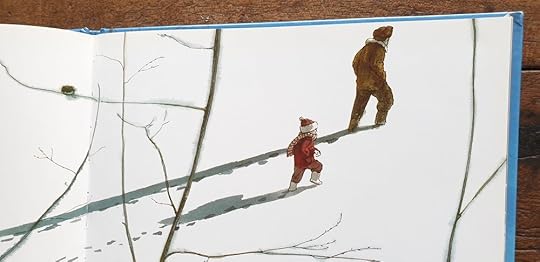
Leaving their farmhouse behind, father and daughter head for the dark woods, crunching over crisp snow ‘whiter than the milk in a cereal bowl.’
Despite being bundled in warm clothes, our narrator describes the feel of the cold – ‘as if someone’s icy hand was palm-down on my back.’ The descriptions are beautiful and poetic – yet feel appropriate for the child.
A great sense of expectancy builds the deeper into the woods they go. (As with The Night Walk, kids will enjoy searching the shadows for hidden nocturnal creatures who watch the quiet owlers pass by – fox, fieldmouse and racoon, for example.) Fear is alluded to, but it still feels safe thanks to Pa’s abiding presence, who walks hand in hand with his daughter.
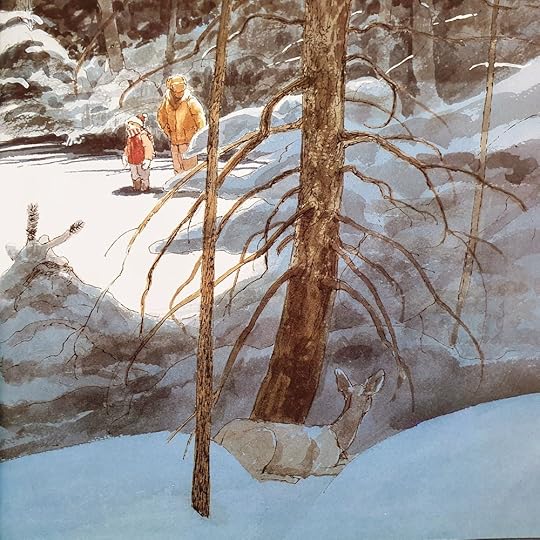
The shadows were the blackest things I had ever seen.
…
I didn’t ask
what kinds of things
hide behind black trees
in the middle of the night.
When you go owling
you have to be brave.
You also have to be patient (which, for me, is part of the joy of birdwatching). Nothing is guaranteed.
Fortunately, Pa has a decent trick up his sleeve!
And then Pa called:
“Whoo-whoo-who-who-who-whooooooo.
Whoo-whoo-who-who-who-whooooooo.”
…
an echo
came threading its way
through the trees.
“Whoo-whoo-who-who-who-whooooooo.”
In case you’re wondering what that would sound like, here’s the call of a Great Horned Owl!
I’ve begun researching owls for a story idea about Picasso’s pet Little Owl. I’ve learnt much about the Great Horned Owl from reading The Owl Papers by Jonathan Evan Maslow, who writes:
To describe [the Great Horned Owl] requires mainly the superlative case. It is the largest and heaviest of all North American owl species. It is also far and way the most powerful of all our owls. If you ever have the opportunity to hold a Great Horned Owl, you will come away comparing the strength of its talons to a locking vise grip, or perhaps a steel claw trap…..Odor of skunk, fang of viper, claw of eagle, or army of crow, [Great Horned Owls] go undaunted. [This owl] is seemingly not acquainted with fear.
This is the (rather formidable) owl that Pa and his daughter hope to see! (She said you had to be brave!)
Pa and the owl hoot to one another, ‘just as if [they]/were talking about supper/or about the woods/or the moon/or the cold.’
The owl’s calls come closer…
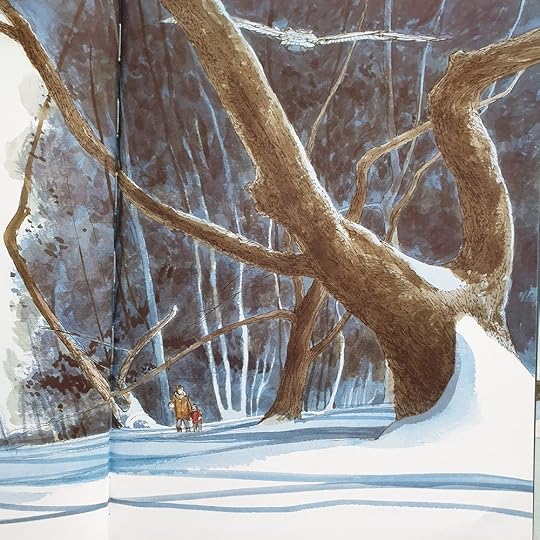
All of a sudden
an owl shadow,
part of the big tree shadow,
lifted off
and flew right over us.
…
The shadow hooted again.
The moment they catch the yellow-eyed owl in the beam of their flashlight is thrilling! Schoenherr’s dramatic shadows make the moment so believable as they stare at one another, ‘[f]or one minute, three minutes, maybe even a hundred minutes’.

You won’t learn much about the habits of owls [from Owl Moon], wrote Paul Johnson in the New York Times, ‘but you will learn everything there is to know about the requirements and rewards of looking for owls.’
What are they?
STORIES WORTH SHARINGOwl Moon by Jane Yolen, illustrated by John Schoenherr(Philomel Books, 1987)Good to Read for:creating calm before bedits sense of adventurenurturing a sense of wonderText excerpts © 1987 by Jane Yolen | Illustrations © 1987 by John SchoenherrGOOD TO READPicture books featuring owls!
When you go owling
you don’t need words
or warm
or anything but hope.
That’s what Pa says.
The kind of hope
that flies
on silent wings
under a shining Owl Moon.
I’m Not Cute! by Jonathan Allen
A Bit Lost by Chris Haughton
Wow! Said the Owl by Tim Hopgood
Hoot Owl, Master of Disguise by Sean Taylor & Jean Jullien
Owl Babies by Martin Waddell & Patrick Benson
Bear’s New Friend by Karma Wilson & Jane Chapman
BUY THE BOOKPowered by Bookshop.org
Supporting independent bookshops
 “As powerful as it is unique.”–
Patriarch
“Extraordinary.”-
Through The Looking Glass Children’s Book Review
BUY US Currently unavailable on UK Bookshop.org* I EARN COMMISSION FROM THESE LINKS #AD/AFFRELATED ARTICLES
“As powerful as it is unique.”–
Patriarch
“Extraordinary.”-
Through The Looking Glass Children’s Book Review
BUY US Currently unavailable on UK Bookshop.org* I EARN COMMISSION FROM THESE LINKS #AD/AFFRELATED ARTICLESSOURCES
Owl Moon by Jane Yolen, illustrated by John Schoenherr (Philomel Books, 1987) Jane Yolen (janeyolen.com) Author Spotlight: Jane Yolen (kidlit411.com) Call of Great Horned Owl: Xeno-Canto (Xeno-canto.org)The Owl Papers by Jonathan Evan Maslow (Penguin, 1983) Birds, books and fatherhood: An interview with Jane Yolen (patriachmagazine.com, 20 April 2020)Owl Moon review, the New York Times © 2022 BY TIM WARNES(UNLESS OTHERWISE ATTRIBUTED)****USE OF THIRD PARTY COPYRIGHTED MATERIAL FALLS UNDER FAIR USE/FAIR DEALING PRACTICE.January 28, 2022
Reframing the dark with 'The Night Walk'
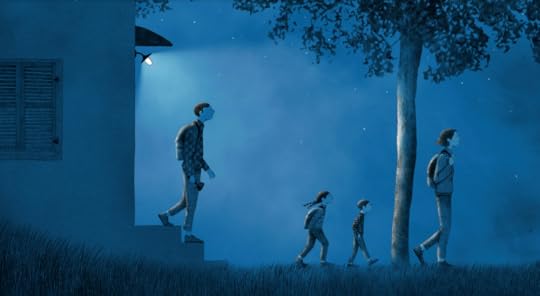 The Night Walk by Marie Dorléans (Floris Books, 2018)Good to Read for:creating a calm atmospheredeveloping your child's sensesrelieving fear of the darkI love being out at night.
The Night Walk by Marie Dorléans (Floris Books, 2018)Good to Read for:creating a calm atmospheredeveloping your child's sensesrelieving fear of the darkI love being out at night. As a boy scout, I enjoyed camping under the stars and the thrill of night hikes. When my own kids were growing up, we'd go to the forest and onto the heath to discover the mysterious purring nightjars and glowworms. For me, the night is a place of wonder and intrigue, and walking in it is a tranquil experience.
So it's no wonder that I am drawn to the beautiful picture book, The Night Walk by Marie Dorléans (Floris Books, 2018). Dorléans captures the quiet mystery of night with watercolour washes of night-time blues. Everything is bathed in a soft, blue light that fills the pages and leaves you feeling embraced. It's a superb book for instilling wonder and appreciation – and the perfect antidote for any children who are afraid of the dark. Read on, and I'll share why.
The story begins in a dark bedroom where two children lie sleeping. A shaft of warm light cuts across the tranquil scene as their mother cracks open the door.
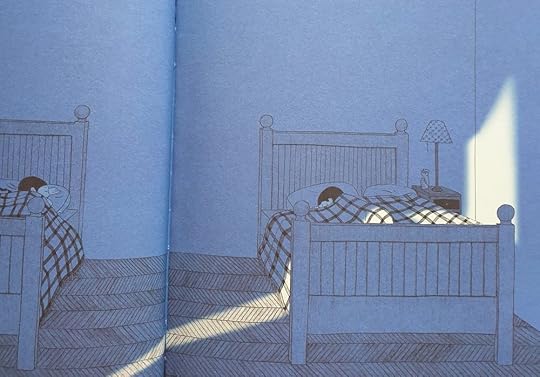
(Throughout The Night Walk, Dorléans ‘[interupts] the night-time darkness' with reassuring (yet sparse) light that emanates from lamps, windows – and finally the moon itself.)
"Wake up, you two," [Mama] whispered.
"Let's go, so we get there on time."
We got dressed without talking, our eyes half-closed.
It was the middle of the night.
How intriguing!
As the family set off into the cool blue, Dorléans' prose alerts our senses to sounds and smells:
Outside, crickets chirped in the corner of the garden.
The summer air smelled of irises and honeysuckle.
Dorléans' attention to detail and gently paced text is so evocative. She describes the family walking through 'the sleeping village' with pavements ‘still warm from the heat of the day.' They pass a warmly lit hotel, still ‘wide awake…[and glowing] bright like a chandelier,' before reaching the edge of the village where the 'last house…was almost asleep. It had one eye open.'
(At this point in the story, readers will be feeling suitably calm.)
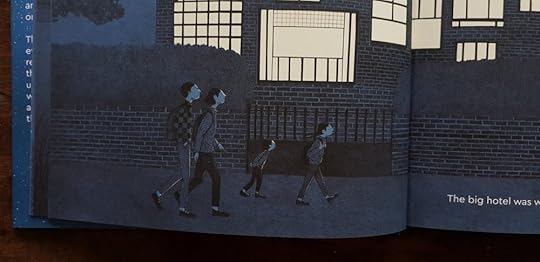
Now the adventure really begins. The family follow the road, past a field of resting cows, then deeper into the countryside. 'Little by little' (just as it is for the characters in the story), the reader's eyes become adjusted to the darkness. The hidden detail (and there's plenty of it) is meticulously drawn in pencil. But the trick Dorléans has pulled off, which makes The Night Walk so delightful, is that you must pause and let your eyes adjust – just as you would if you were taking your own night walk.
It's worth the effort. Because when you do, night creatures, hidden by a cloak of darkness, 'emerge from the shadows.'
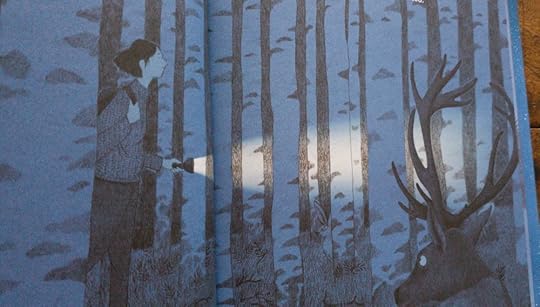
The path climbs higher. A flashlight goes on, and a distant train with its row of bright windows crosses over a viaduct:
[image error]
[It] sliced through the darkness:
wheels shrieking, carriages shaking.
Then it was gone.
There was just us and the still silence.
This is an excellent book for explaining the meaning of mindfulness: being in the moment, alert to sensations. The family are present, together, in the shared moments of their night walk:
We threaded through the whispering forest.
The earth was damp, the bark smelled comforting.
Dead branches snapped under our feet,
and ferns swayed quietly as we passed.
The forest opens up on a lake, where the kids (using Dad's flashlight) play with the moon's reflection. They lie together on the grass and gasp 'at the vast, glittering sky' where they stay, ‘until Papa [says], "Let's push on. We need to keep walking, so we get there on time."
Oh yeah! I was so engrossed in the moment and enjoying the night walk that I forgot they needed to get somewhere on time!
We climbed up a hillside, picking our way from rock to rock.
"Hurry!" said Mama.
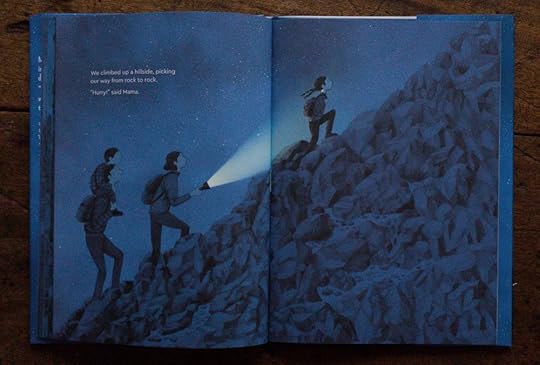
The sense of anticipation grows until finally, they make it to the top of the hill, just in time to watch the sunrise.
"Ohhh!"
We sat quite still, warm together,
amazed by the light of a new day.
The Night Walk is described as 'a graceful, perfectly paced appreciation of nature' by Publishers Weekly. And it's a refreshing antidote to the many traditional stories/picture books that teach children that the dark is something to be feared. Here, the night isn't scary. Dorléans presents it as a friend who shelters quiet, gentle creatures. Walking at night (especially in the wild) is one of my favourite things to do. And I assure you – Dorléans has captured the atmosphere and sensations not only accurately, but beautifully. (The Night Walk was initially published in French – so credit due to the translator, Polly Lawson!)
The New York Times wrote that The Night Walk 'evokes a luminous sense of wonder.' I hope it inspires families to get out there on a night (or dawn!) walk of their own.
 STORIES WORTH SHARINGThe Night Walk by Marie Dorléans (Floris Books, 2018)Good to Read for:creating a calm atmospheredeveloping your child's sensesrelieving fear of the darkText & illustration excerpts © 2018 by Marie Dorléans
STORIES WORTH SHARINGThe Night Walk by Marie Dorléans (Floris Books, 2018)Good to Read for:creating a calm atmospheredeveloping your child's sensesrelieving fear of the darkText & illustration excerpts © 2018 by Marie DorléansGOOD TO READ
Picture books that celebrate the night
Max at Night by Ed Vere
Once Upon a Northern Night by Jean E. Pendziwol & Isabelle Arsenault
Little Honey Bear and the Smiley Moon by Isobel Gamble & Tim Warnes
Owl Moon by Jane Yolen
I Love You to the Moon and Back by Amelia Hepworth & Tim Warnes
BUY THE BOOKPowered by Bookshop.org
Supporting independent bookshops
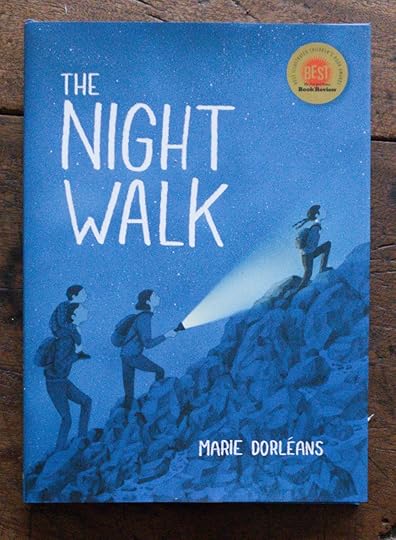 "This peaceful story is a great book to share at bedtime!"– Marathon County Public Library, GoodReads"A moment of pure wonder and peace."– The Horn Book Review Buy UK bUY us * I EARN COMMISSION FROM THESE LINKS #AD/AFF
"This peaceful story is a great book to share at bedtime!"– Marathon County Public Library, GoodReads"A moment of pure wonder and peace."– The Horn Book Review Buy UK bUY us * I EARN COMMISSION FROM THESE LINKS #AD/AFFRELATED ARTICLESSOURCESThe Night Walk by Marie Dorléans (Floris Books, 2018) The Night Walk (Tasha’s Review, 23 April 2021) The Night Walk (publishersweekly.com)© 2022 BY TIM WARNES(UNLESS OTHERWISE ATTRIBUTED)****USE OF THIRD PARTY COPYRIGHTED MATERIAL FALLS UNDER FAIR USE/FAIR DEALING PRACTICE.
My Life in Books
For lovers of kid lit, this memoir - My Life in Books - is intended to give you the confidence and encouragement to share your own passion; to help you make lasting connections through kids’ books.
Originally posted at www.timwarnes.com ...more
- Tim Warnes's profile
- 30 followers



